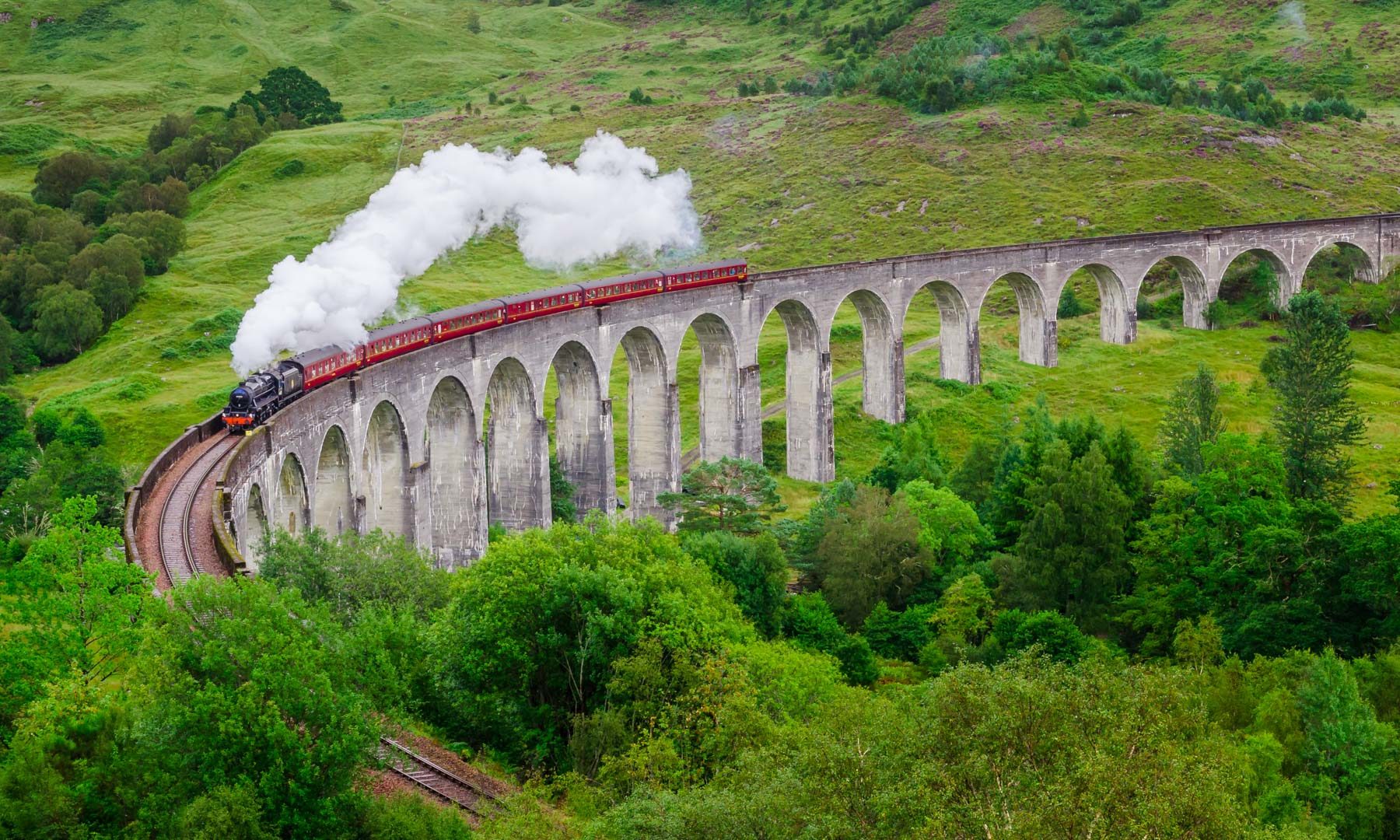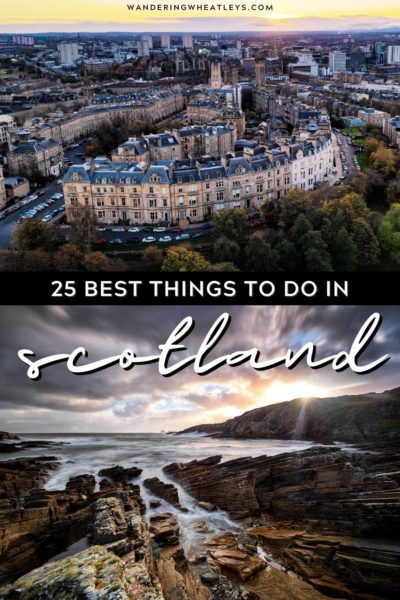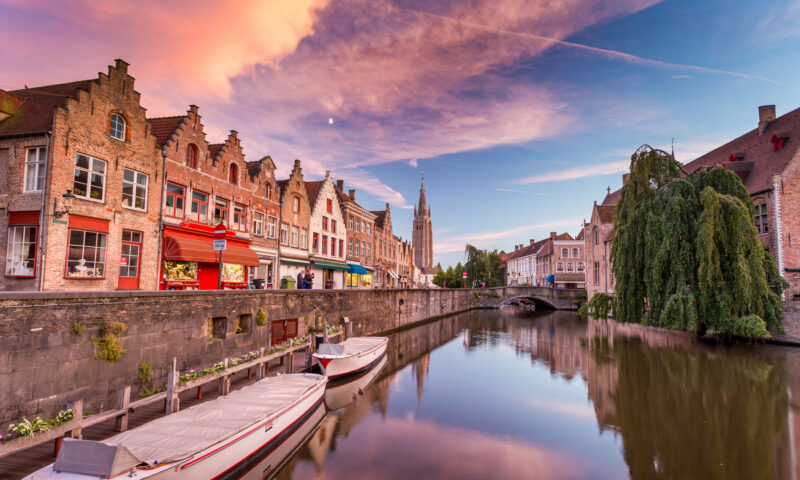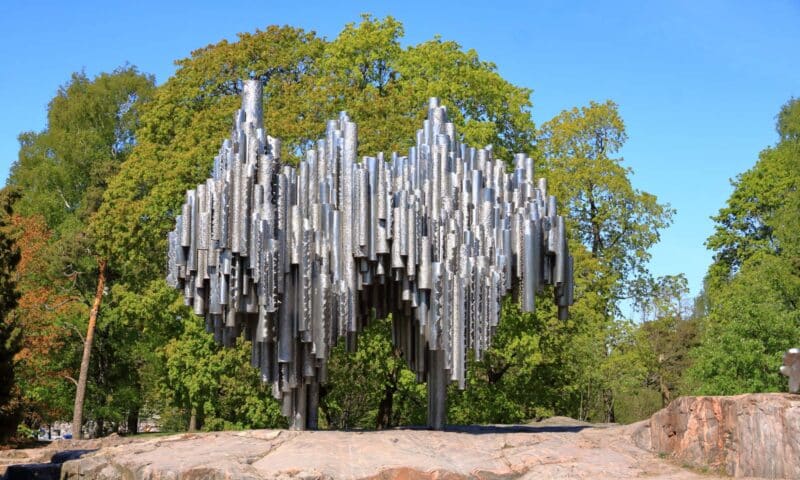From soaring mountain peaks to glorious glens and beautiful lochs, Scotland is a country that’s bursting with spectacular scenery and fantastic places to visit. Scotland is an outdoor lover’s paradise, and you can spend weeks at a time hiking long-distance trails, bagging Munros, and camping out in the wilderness.
You can delve into the folklore on the Isle of Skye, go birdwatching on St Kilda, or spot wildlife in the Shetlands. There are monsters to be searched for at Loch Ness, the tallest mountain in the United Kingdom (Ben Nevis) is waiting to be climbed, and the Isle of Lewis and Harris is the perfect destination for beachgoers.
In the Orkney Islands, you’ll find ancient stone circles and Neolithic settlements, while museums and galleries are on every street in Edinburgh and Glasgow. And across Scotland, there are medieval castles and country estates waiting to be explored.
With so many things to see and do, you might not know where to begin. That’s why we’ve compiled our list of the absolute best things to do in Scotland for you. Stick to these fun and unique Scotland bucket list recommendations, and there’s no doubt you’ll have an amazing time exploring this beautiful part of the world!
Don’t forget to check out our web story: The 25 Best Things to do in Scotland
Disclaimer: This post may contain affiliate links. If you make a purchase or booking through one of our links we may earn a small commission (don’t worry, it’s at no extra cost to you).
The 25 Best Things to do in Scotland
1. Climb Ben Nevis – Scotland’s highest mountain
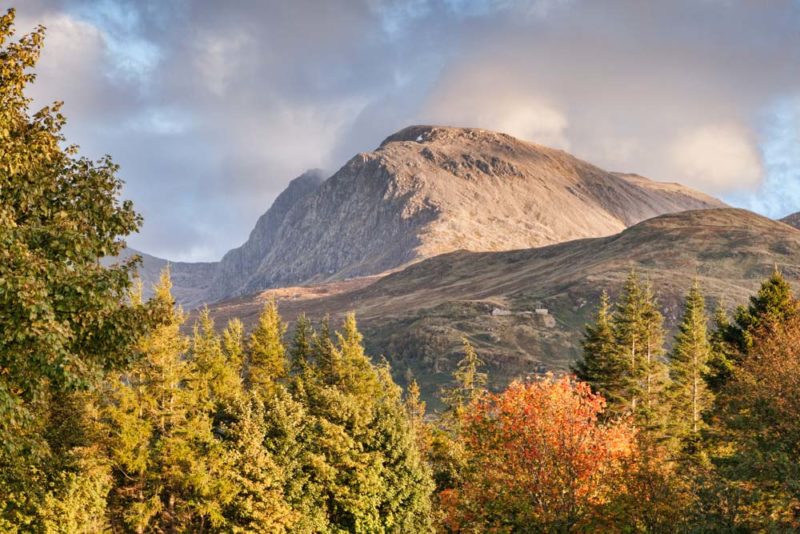
Rising to an altitude of 1,345 meters, Ben Nevis has the lofty distinction of being the highest mountain in Scotland. But it’s more than this because Ben Nevis, which sits in the midst of the Scottish Highlands, is the tallest mountain to be found anywhere in the United Kingdom!
Ben Nevis is part of the Grampian Mountains, and it’s located close to the town of Fort William, which is generally considered to be Scotland’s adventure capital. Ben Nevis can be climbed in one day, but you do need to be physically fit and have some experience hiking up mountains if you decide to tackle the summit on your own.
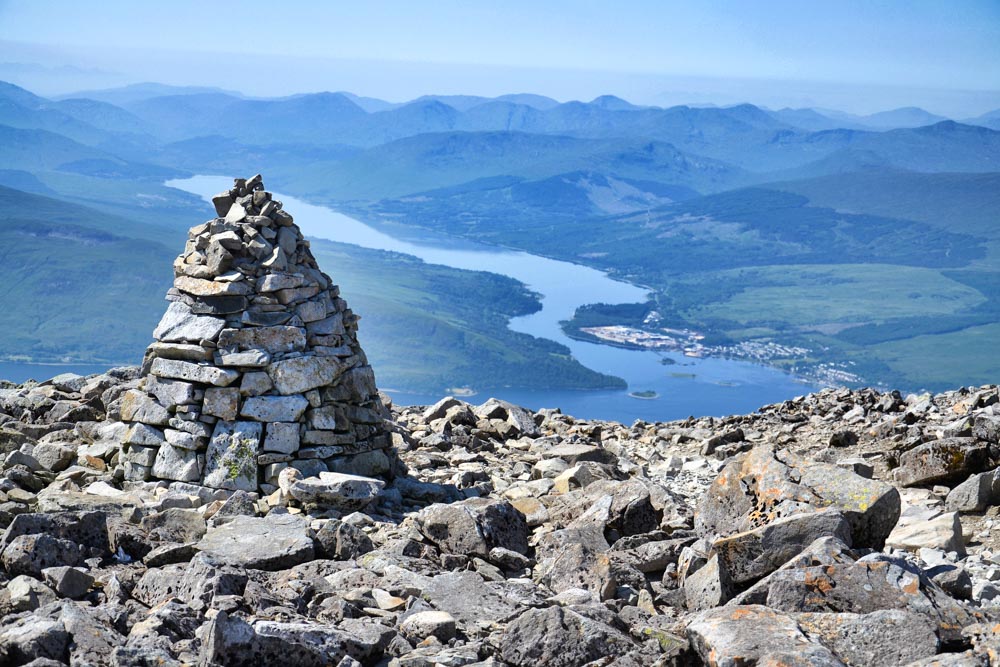
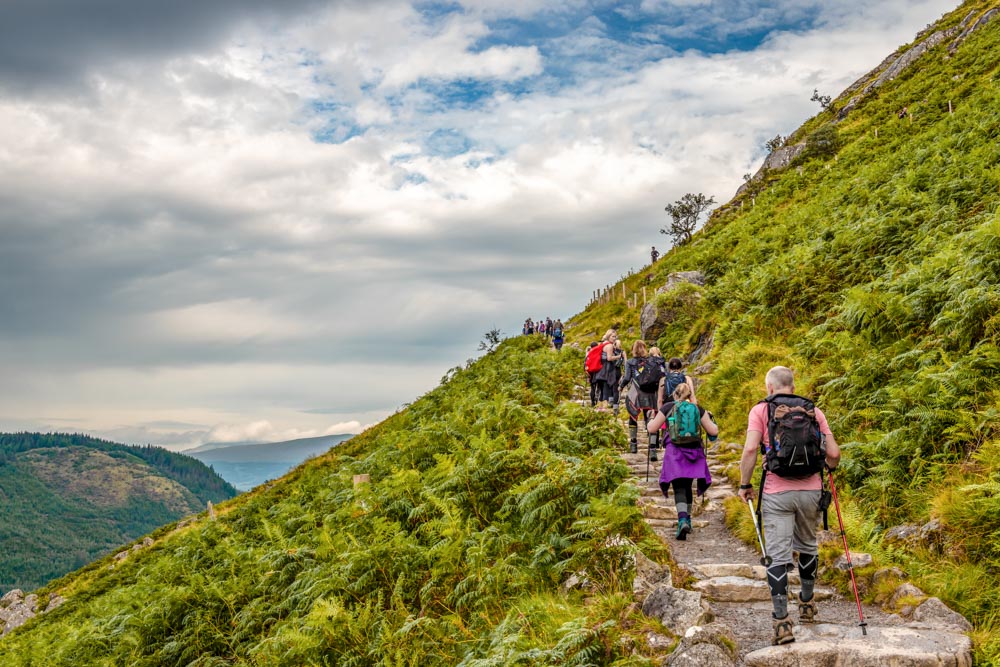
Starting at the Visitors Centre at the base of the mountain, most travelers will take the Mountain Track, which is the easiest route to the top. We say easy, but it’s still going to take you at least 6 hours to get there and back again!
Now, 1,345 meters might not seem that tall either, especially if you’re from or have visited other more mountainous parts of the world. While you won’t get altitude sickness climbing Ben Nevis, you do still need to be prepared for the weather to turn.
The Scottish Highlands have notoriously poor weather conditions, and even in the summer, you need to be ready to navigate through thick fog and deal with torrential rain, wind, or even snow. With a bit of planning and a little training, though, Ben Nevis can be conquered, making this one of the best things to do in Scotland!
2. Road trip the North Coast 500
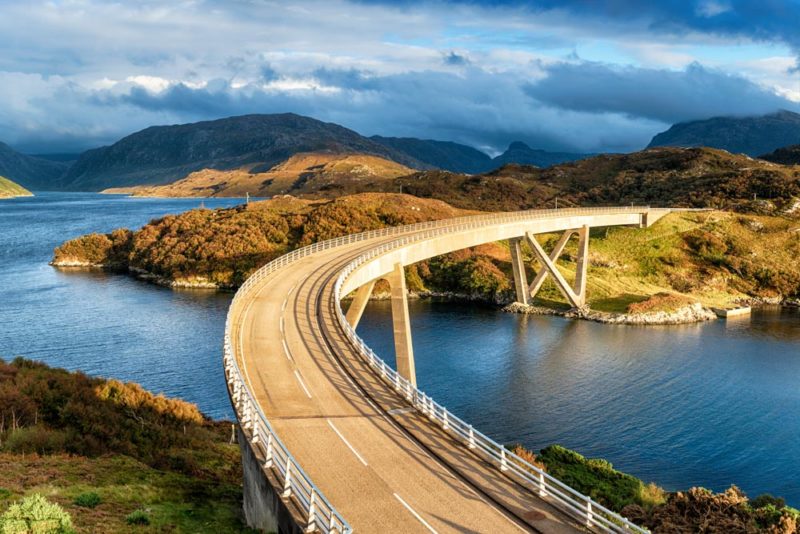
One of the coolest things to do in Scotland is the North Coast 500, or NC500, a spectacular self-driving route that takes you through Northern Scotland’s most beautiful scenery. The NC500 is 516 miles long (hence the name!), and it was designed to link up the best outdoor, cultural, and historical attractions to the north of Inverness.
You can rent a car – or better yet, a campervan – and take it slow as you road trip the NC500. If you’re feeling adventurous, you could even cycle the route. Your road trip begins (and ends) in Inverness, and you can start by heading west to meet the coast at Applecross.
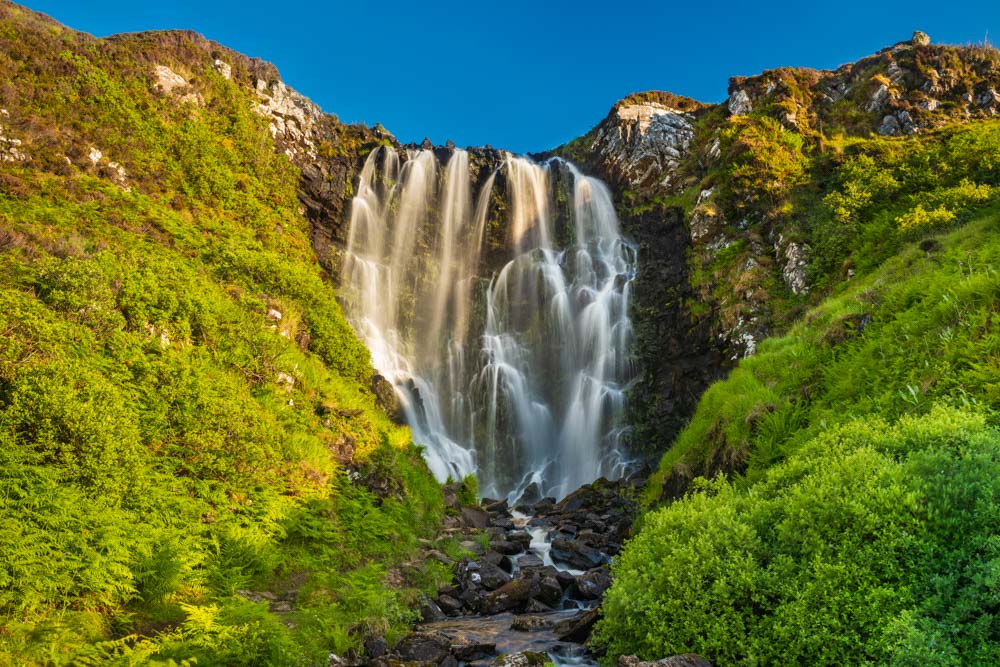
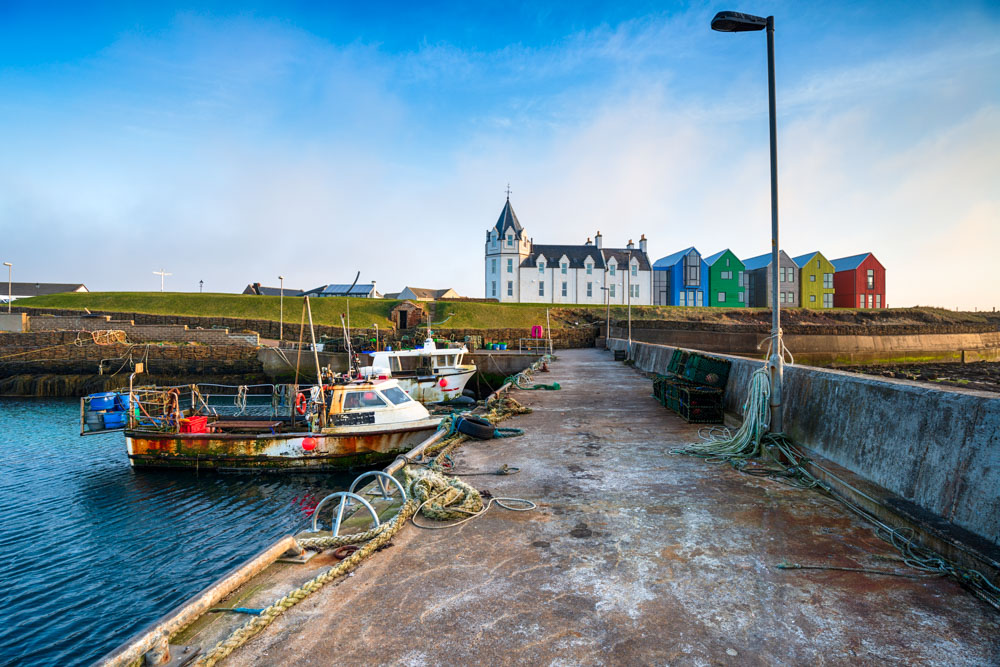
From Applecross, you’ll head north. Sort of. The road here starts to get bendy as you weave your way along the rocky western shores, driving around long peninsulas and crossing dramatic bridges that span the lochs and estuaries.
When you make it to the north coast, you can stop off at John O’groats, the most northerly point in mainland Britain. From there, it’s back south, following the eastern shore as you weave your way down to finish the road trip in Inverness.
This is one of the best Scottish activities, and you’ll be awed by the sheer beauty of the Highlands and the coastal scenery. Although the weather is best in the summer, it can get spectacularly busy, too. If you can, we recommend trying to tackle the NC500 outside of peak holidays. We also recommend camping out to escape the crowds.
3. Ride the Jacobite Steam Train from Fort William to Mallaig
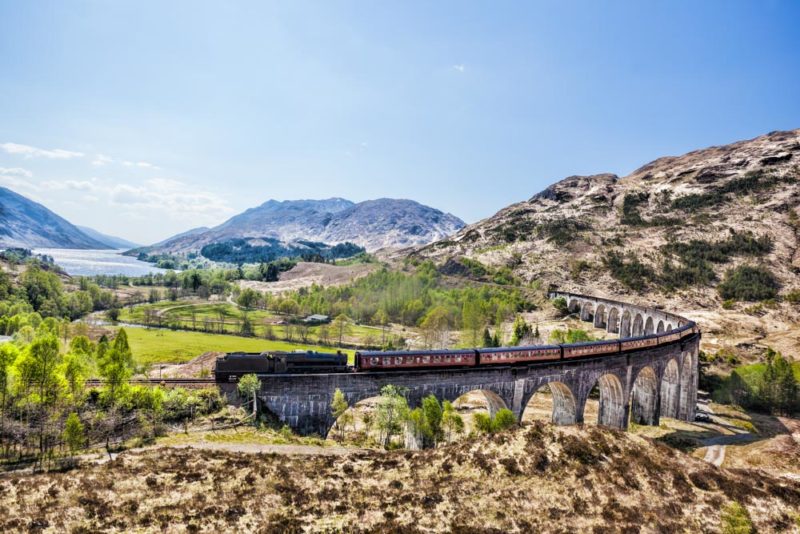
Have you ever seen the Harry Potter movies? If the answer is “yes,” you’ll have seen the Hogwarts Express as it steams its way through dramatic mountain scenery. That’s not CGI because it was the historic Jacobite Steam Train that stood in for the Hogwarts Express in many of the external shots.
The Jacobite runs on the West Highland Line, a 42-mile railway track that connects Fort William to Mallaig. The journey takes around 2 hours to complete. During the trip, you’ll be enjoying the comforts of a vintage railway carriage (you can order cream teas on board!) as the steam train whistles and chugs its way across the Highlands to the most westerly train station in Britain.
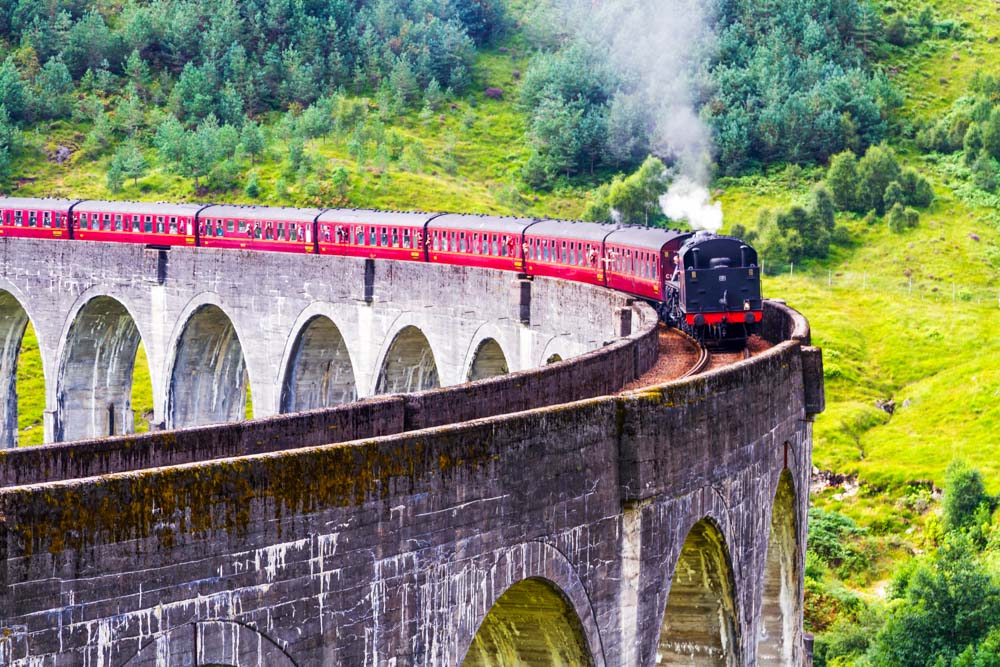
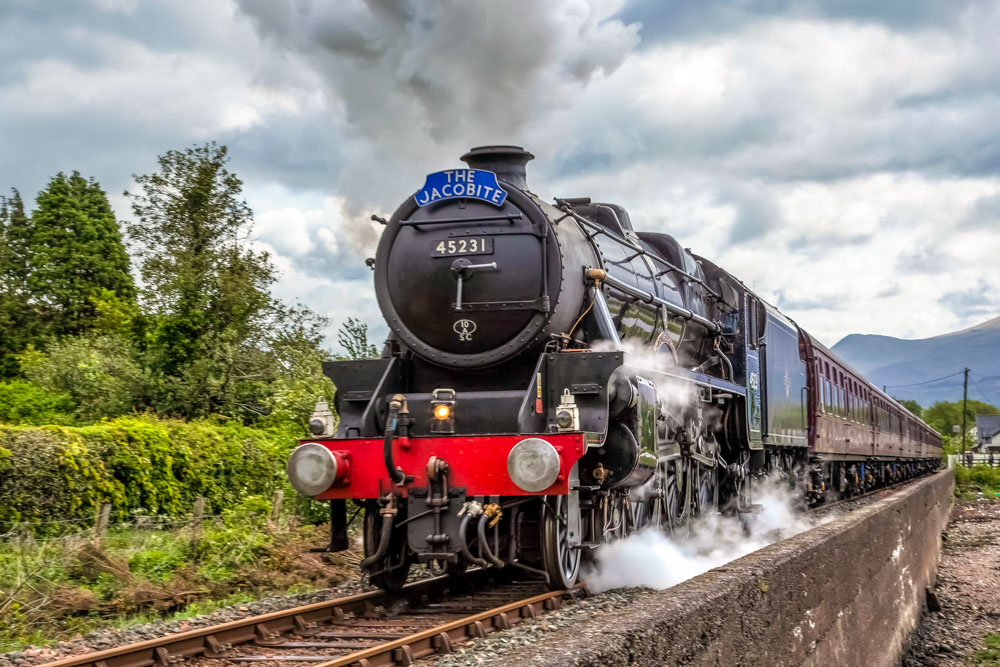
Along the way, you’ll have unreal views of the Scottish Highlands as you leave Fort William in a cloud of smoke before rushing headlong over the Glenfinnan Viaduct. You’ll see mountains, lakes, and rivers before alighting the train next to the banks of the deepest loch in Europe.
You can hang around in Mallaig – which sits perfectly on the western coast of Scotland – or head off to explore the islands of the Hebrides. Alternately, you can jump back on board in the afternoon and head back to Fort William if you’re in a hurry. The Jacobite Steam Train runs twice a day in both directions from April through the end of October.
4. Walk along Edinburgh’s Royal Mile
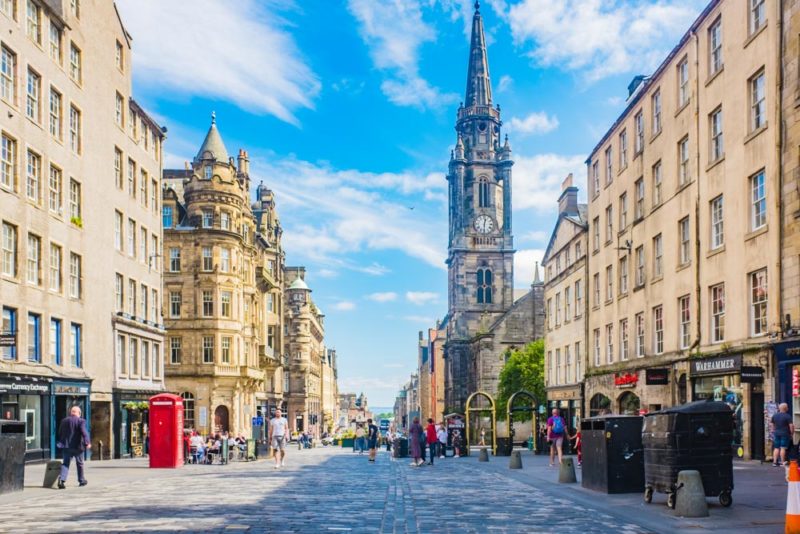
Edinburgh is Scotland’s lofty capital city, and it’s a capital that’s packed with regal history and royal charm. A trip to Edinburgh is a must when you visit Scotland, especially if it’s your first time in the country, and a walk along Edinburgh’s famous Royal Mile should be at the top of your Scotland bucket list!
This is the most iconic street in Scotland, and it runs for one “Scottish Mile” (which is longer than your average mile!) from Holyrood Palace to Edinburgh Castle. Along the way, you can stop off at some of the capital’s most historic attractions, starting with the British monarchy’s official Scottish residence at Holyrood.
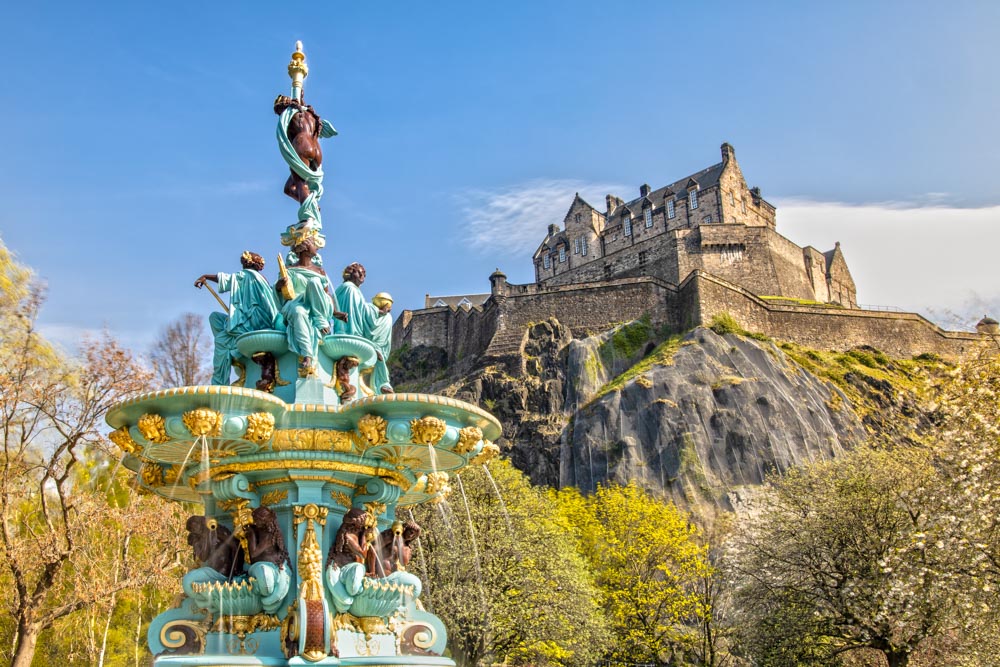
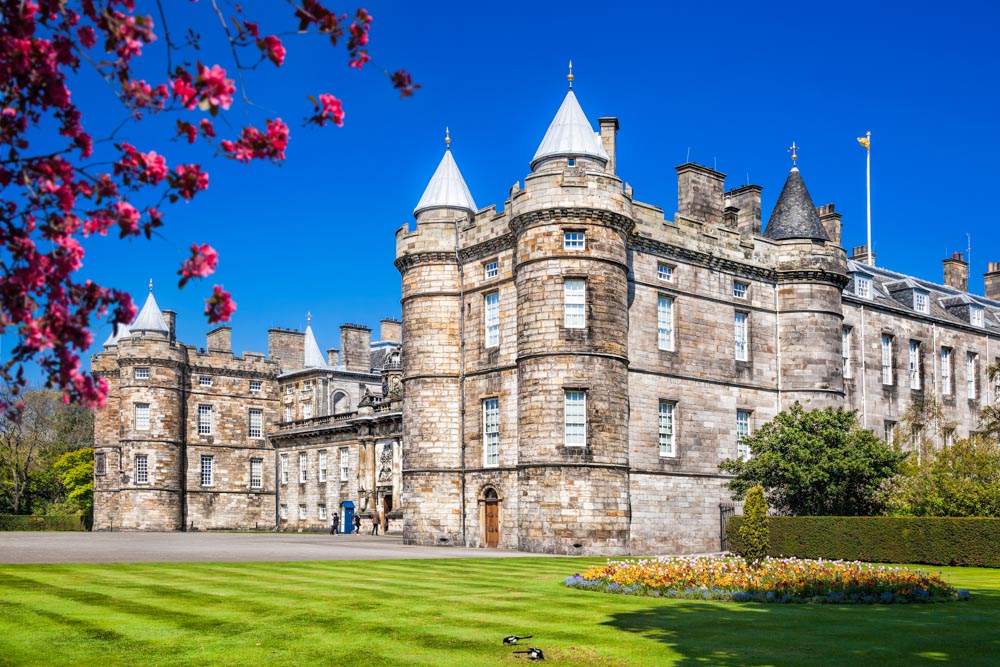
After gazing at stately halls and lavish regalia, continue along the Royal Mile, passing the Scottish Parliament and important locations such as Canongate. You can stop off at the National Museum of Edinburgh or take a break for a refreshing pint of beer in one of the many pubs along the route.
Edinburgh Castle sits at the top of a craggy, volcanic rock at the far end of the Royal Mile. As you near the castle’s imposing medieval gates, you might find bagpipers playing tunes for the tourists.
Stroll through the gates, and you’ll find yourself inside the walls of Edinburgh Castle, where you’ll be surrounded by centuries of Scottish history. The castle dates back to at least the 11th century AD, but the volcanic rock that it sits upon has been a fortress for millennia. You can walk the castle’s walls, enjoy glorious views over the city from the towers, and learn about the local history in the castle’s museums.
5. Delve into the National Museum of Scotland
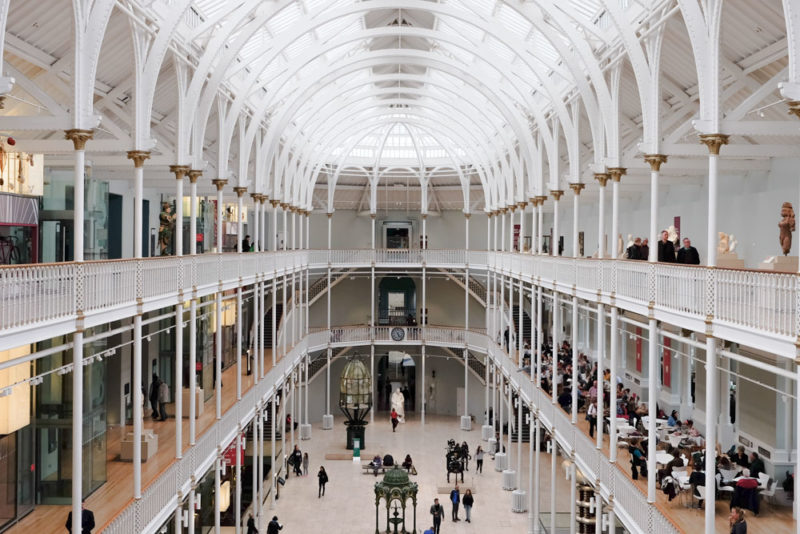
You can’t escape the history when you visit Scotland, so dig in and learn more about the nation’s rich heritage with a visit to the National Museum of Scotland!
This is the nation’s number one museum, and it’s devoted to uncovering, exploring, and displaying Scotland’s past, present, and future for all to see. You’ll find the museum in Edinburgh, set back a few streets from the Royal Mile, and what better setting could there be than the capital for a national museum?
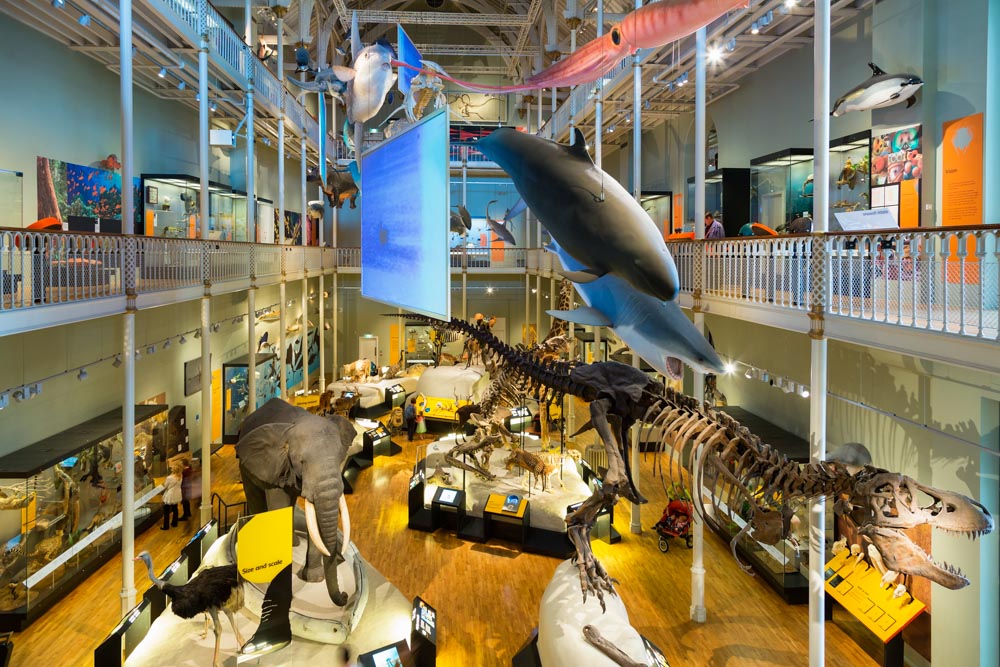
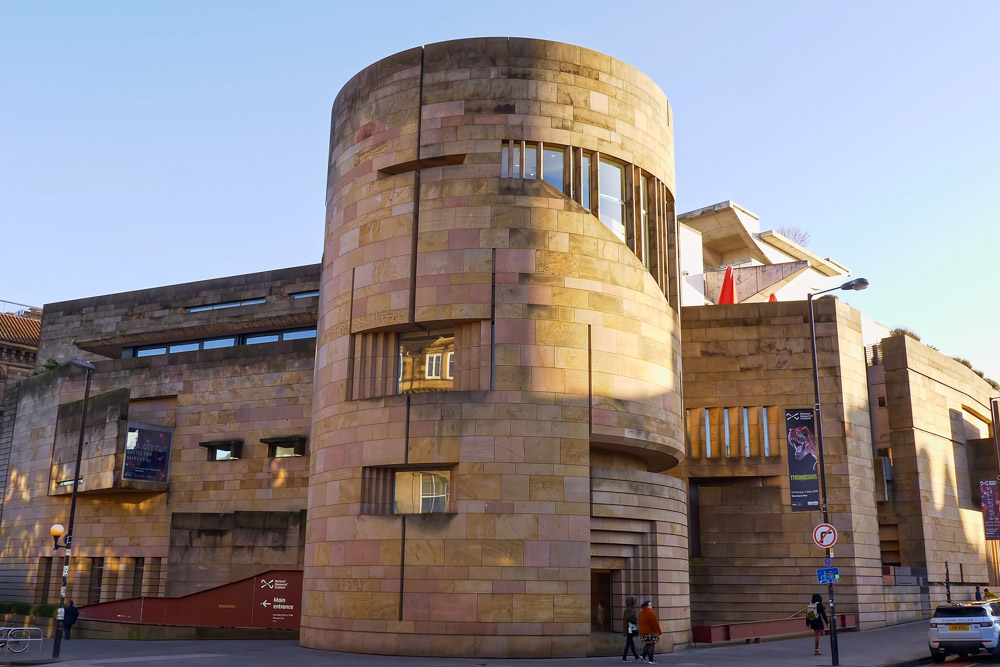
Be prepared for a deep dive because the National Museum of Scotland offers a wealth of displays and exhibitions delving back as far as the county’s prehistoric era. You’ll move swiftly through history as you learn about the Scots who shaped Scotland and how Scotland helped shape the world.
Save a few hours for this museum when you are in Edinburgh because you’re going to need all the time in the world to see everything that’s on display. There are exhibits on fashion, transport, medicine, conflict, politics, and so much more, making this one of the best places to visit in Scotland!
6. Hike to the top of Arthur’s Seat (Edinburgh’s extinct volcano)
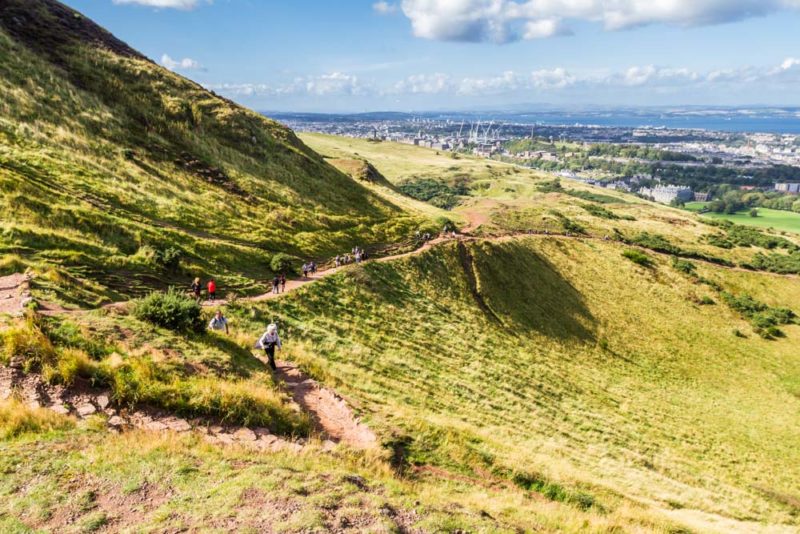
If you’re exploring Edinburgh, then the hike to the top of Arthur’s Seat is one of the most unique things to do in Scotland. Arthur’s Seat is the best viewpoint in the city, but it’s more than this because Arthur’s Seat is also an ancient, extinct volcano.
This unusual natural feature is a symbol of the Scottish capital. It rises high above the Parliament building and Holyrood Palace, standing guard over Scotland’s institutions and people. The volcano is located at the end of the Royal Mile, and despite being a wild and natural place to explore, it’s so very close to the city.

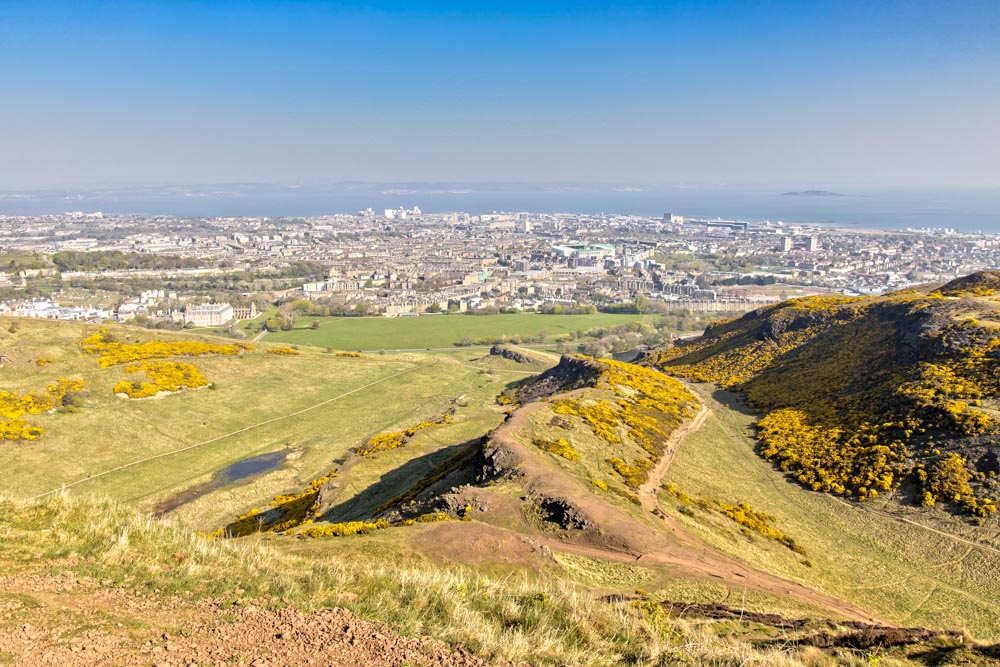
You can start your hike at Holyrood Palace before walking through Holyrood Park and then following the trail to the top of Arthur’s Seat. The top of the extinct volcano is some 250 meters above sea level, but the hike is fairly gentle and should take no more than 30 minutes each way. If you’re down for some exercise, though, you can join the many trail-running locals who use Arthur’s Seat for training!
From the top, you’ll have spectacular views across to the Firth of Forth in one direction and down to Holyrood Palace and Edinburgh in the other.
7. Follow the ‘Castle Trail’ in Aberdeenshire
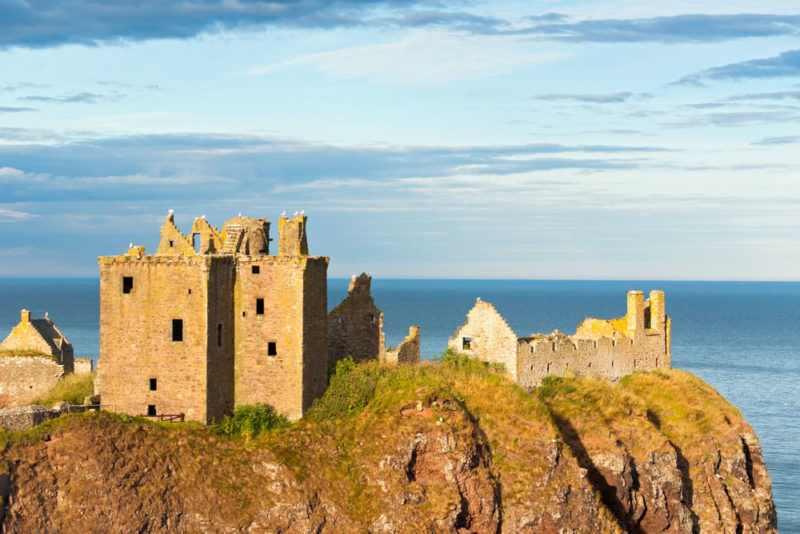
Visit Aberdeenshire, and you’ll find that the county has more castles than anywhere else in Scotland, with a grand total of 260 fortifications, ruins, and country estates dotted across the region.
That’s more castles than you could ever hope to see in one trip to Scotland, but you can enjoy a whistle-stop tour of the best when you follow the “Castle Trail.” This 300-mile road trip route starts in Stonehaven, on Aberdeen’s coast, where you’ll visit the famous Dunnottar Castle before heading inland to explore stately homes.
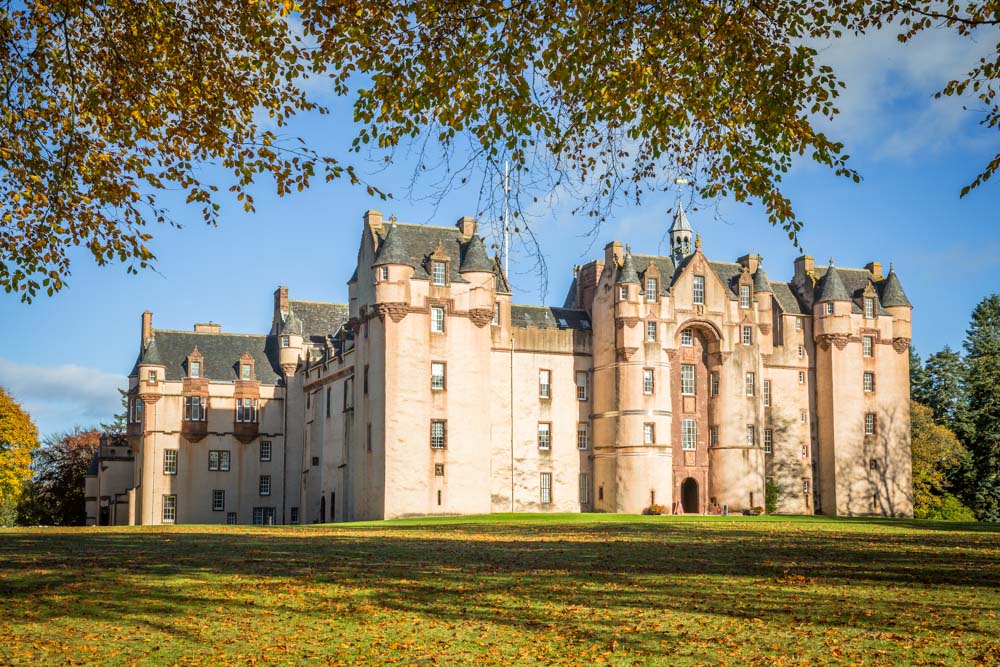
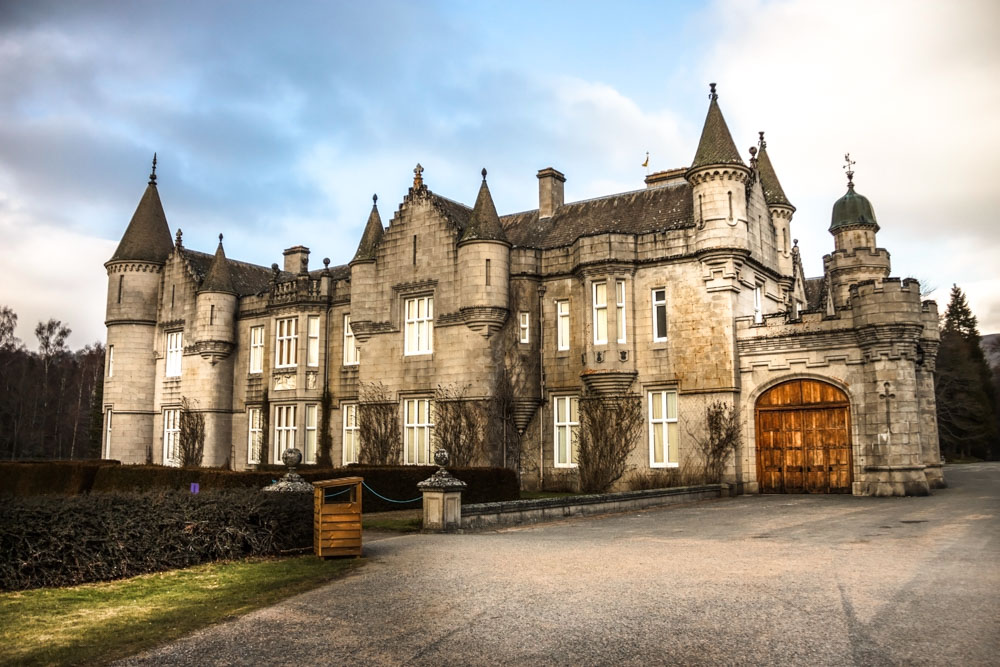
You’ll continue across Aberdeenshire, visiting three or four castles per day and enjoying the scenery as you explore both coastline and countryside. You can end the tour in Aberdeen, one of Scotland’s most underrated cities, where you can visit museums, galleries, and distilleries before heading off on your next adventure.
8. Follow in the footsteps of royalty at Stirling Castle
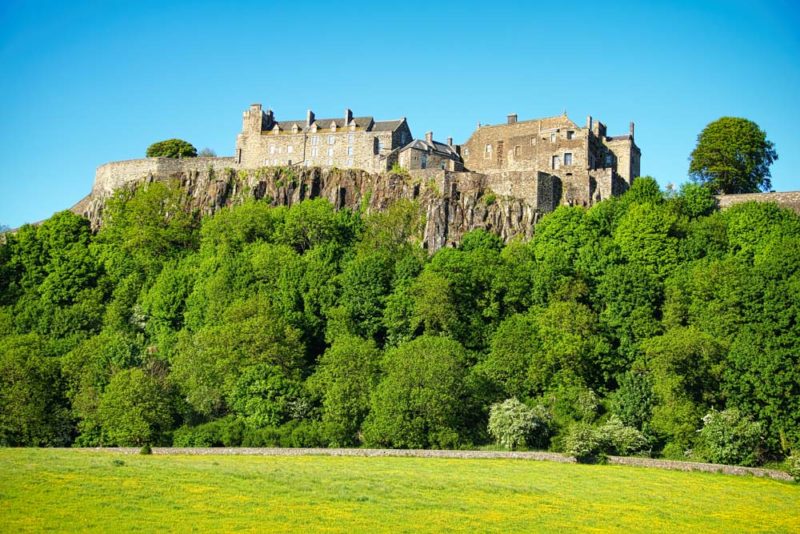
If you only have time to visit one castle when you’re in Scotland, then make it Stirling Castle. This is one of the country’s most important strongholds, and you’ll be awed by the sight of tall towers and medieval walls standing tall on top of the craggy hilltop.
Stirling Castle is located next to a vital crossing of the River Forth, and it’s thought to date back to at least the 12th century, if not earlier. The castle remained strategically important for many centuries, and the vast majority of defensive structures that remain today were added in the 15th and 16th centuries.
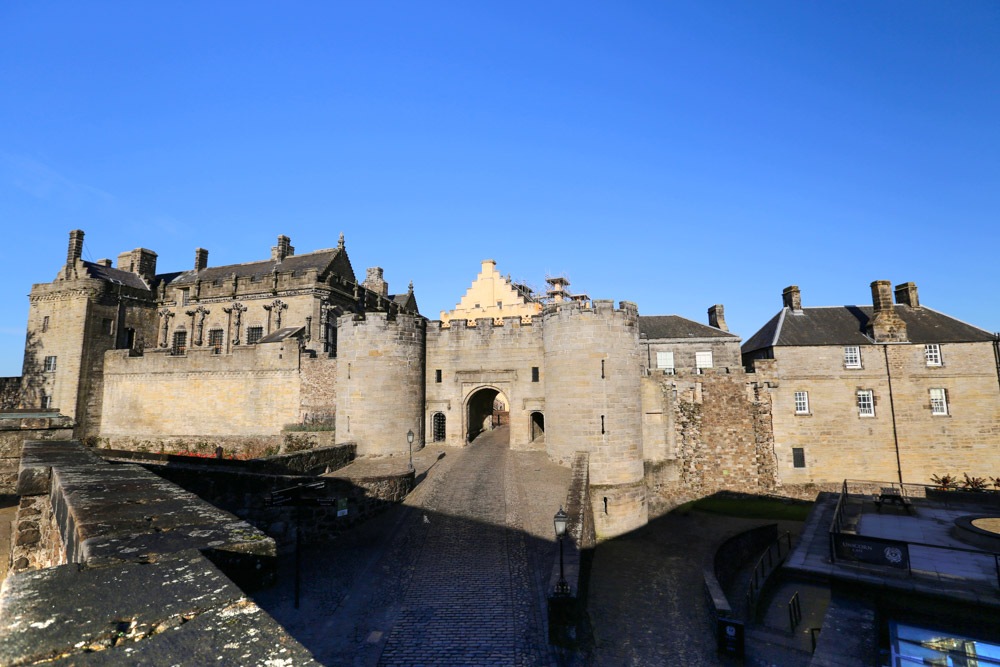
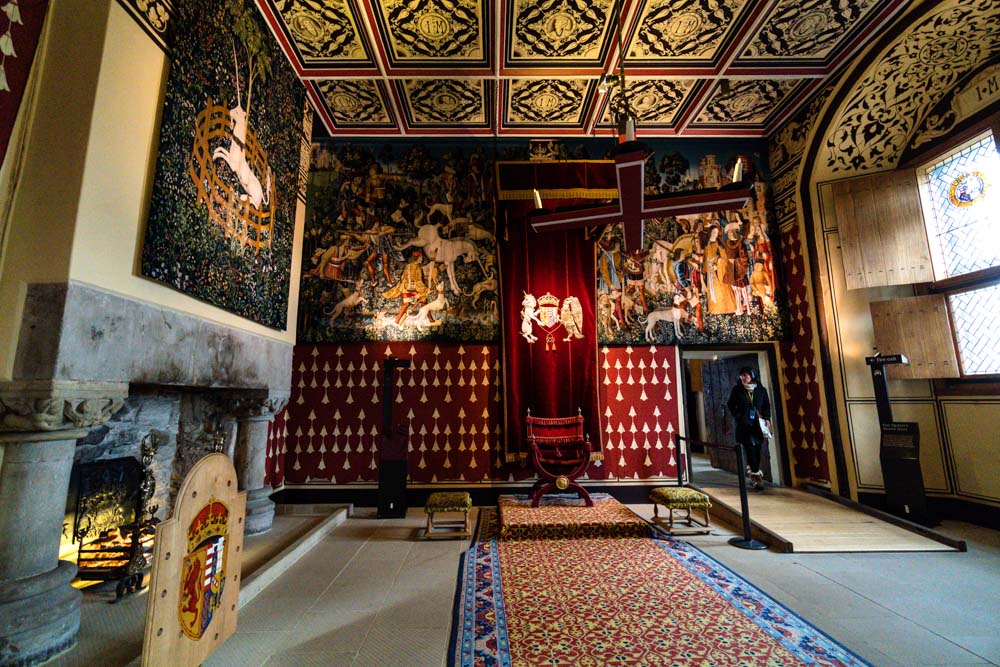
This was the scene of bloody battles and sieges between the Scots and the English throughout history. So it makes sense that the castle came to symbolize the idea of Scottish independence. Many of Scotland’s kings and queens were even crowned here, including Mary, Queen of Scots.
9. Delve into the depths of Glasgow’s many, many museums
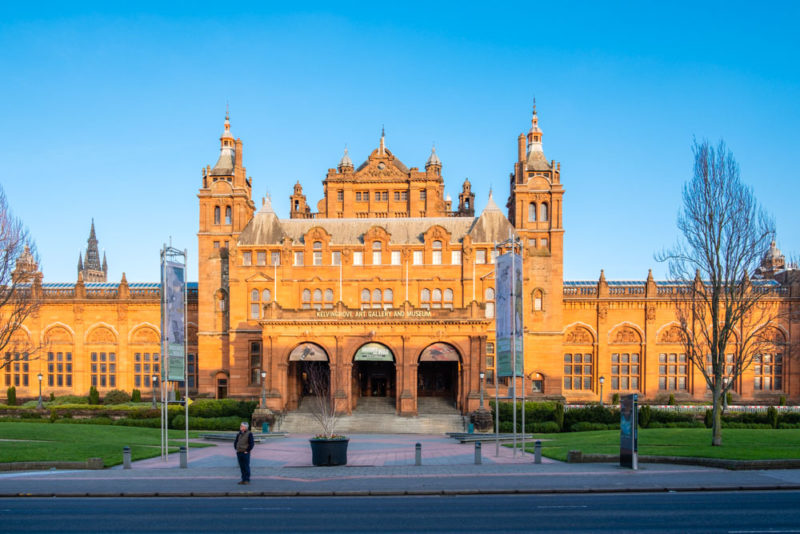
Glasgow is often overshadowed by its neighbor, the Scottish capital Edinburgh. But you should know that there’s just as much history and culture to be found in Glasgow as there is in Edinburgh!
Glasgow is a literal treasure trove of museums, and whether it’s history, art, or science that excites you, you’ll find it here in the city. We recommend that you start at the Kelvingrove Art Gallery and Museum, a grand Victorian-era museum that’s home to dinosaurs, Egyptian mummies, World War II fighter planes, and archaeological finds gathered from across the world.
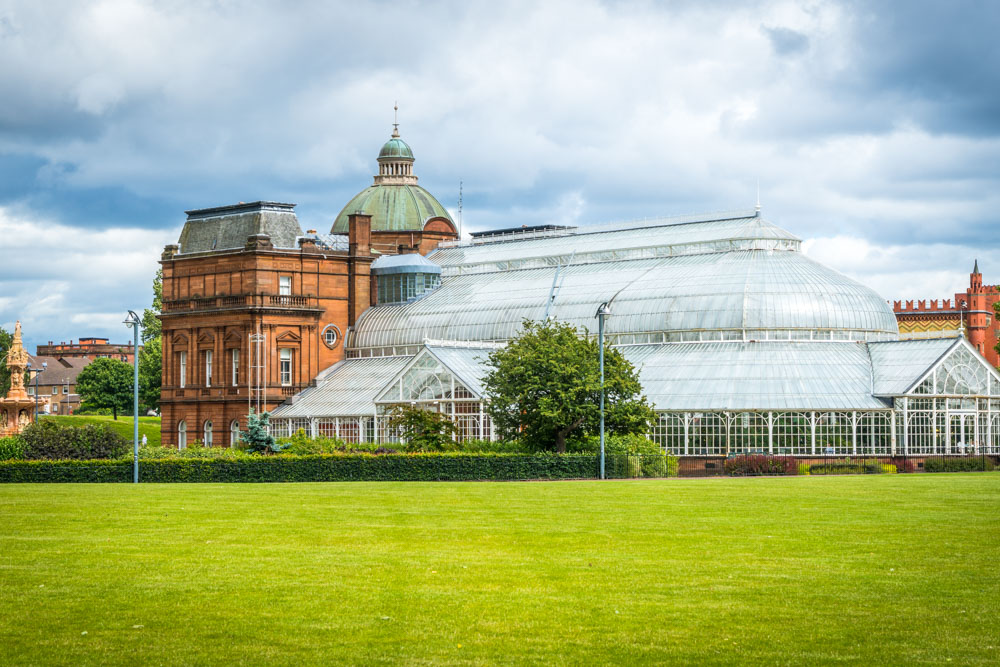
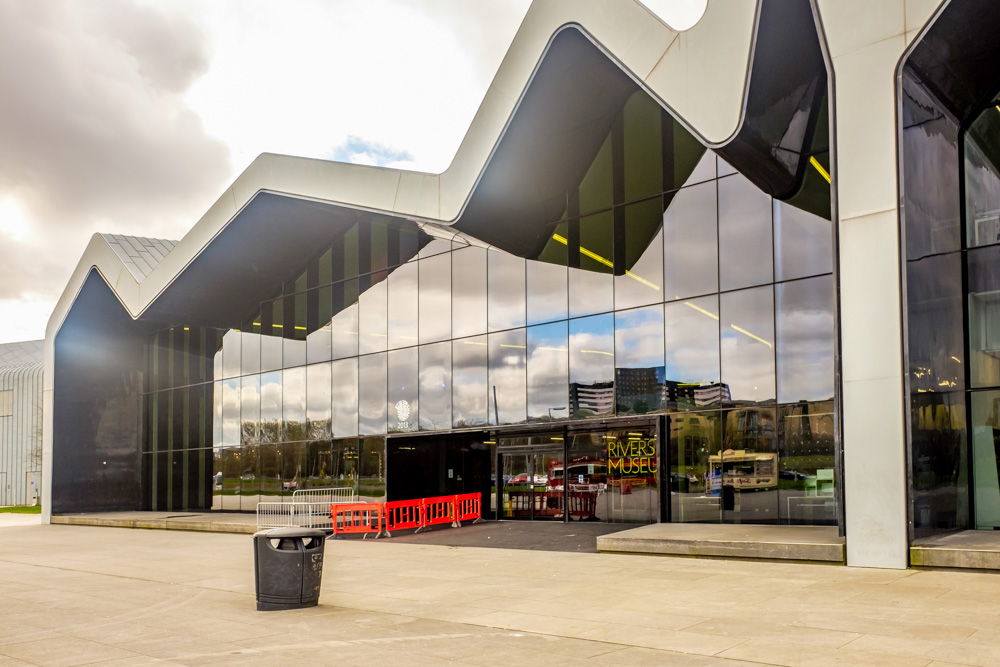
Next, visit the People’s Palace and Winter Gardens, a unique museum and botanic garden that tells the story of the people of Glasgow. The Riverside Museum is home to tall ships and transport exhibitions, while Glasgow Science Centre needs little introduction.
Once you’ve exhausted all of the top museums, you can move on to the more niche favorites, including the Hunterian Museum, the Hunterian Art Gallery, the Scottish Football Museum, and even the Glasgow Police Museum. If you love museums, then it’s safe to say you’ve landed in the right city!
10. Adventure around Loch Lomond and the Trossachs National Park
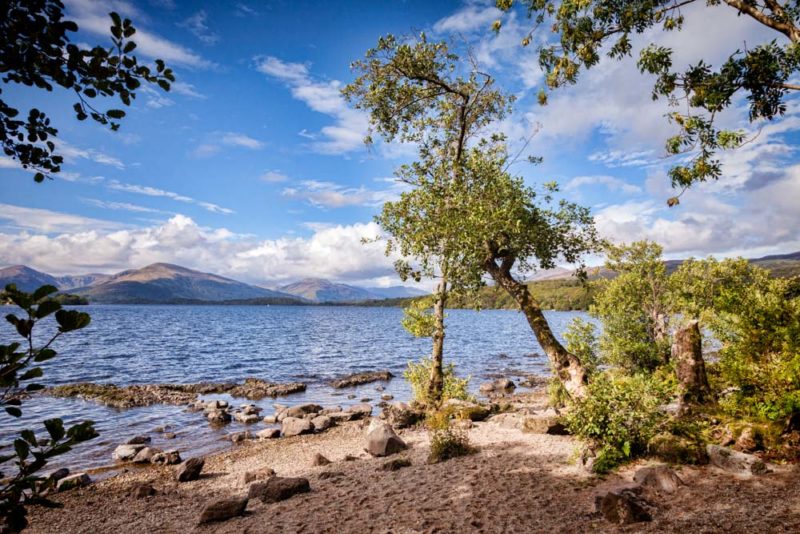
If you’re staying in Glasgow, then you don’t need to travel far to escape the city and lose yourself in Scotland’s beautiful and vibrant natural scenery. Just north of the suburbs, you can find Loch Lomond and the Trossachs National Park, which is less than an hour’s drive from Glasgow city center.
This is where the Scottish Highlands begin, and you’ll find a large freshwater loch (Loch Lomond) that forms the basis for the national park. Loch Lomond is one of the largest bodies of fresh water in the UK, and you’ll have ample opportunity to explore the loch and get out and enjoy some watersports.
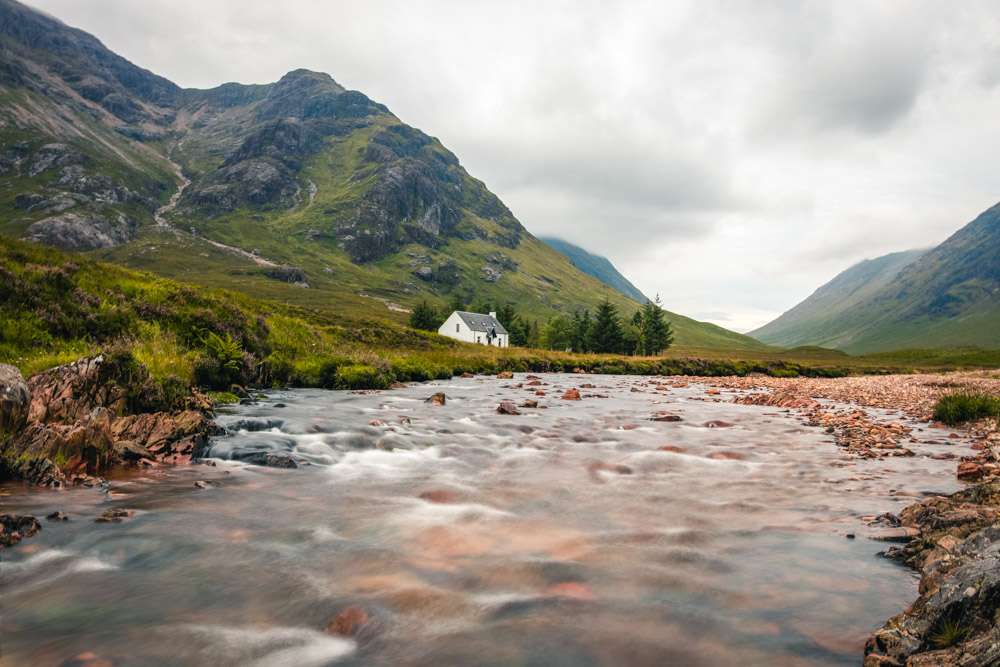
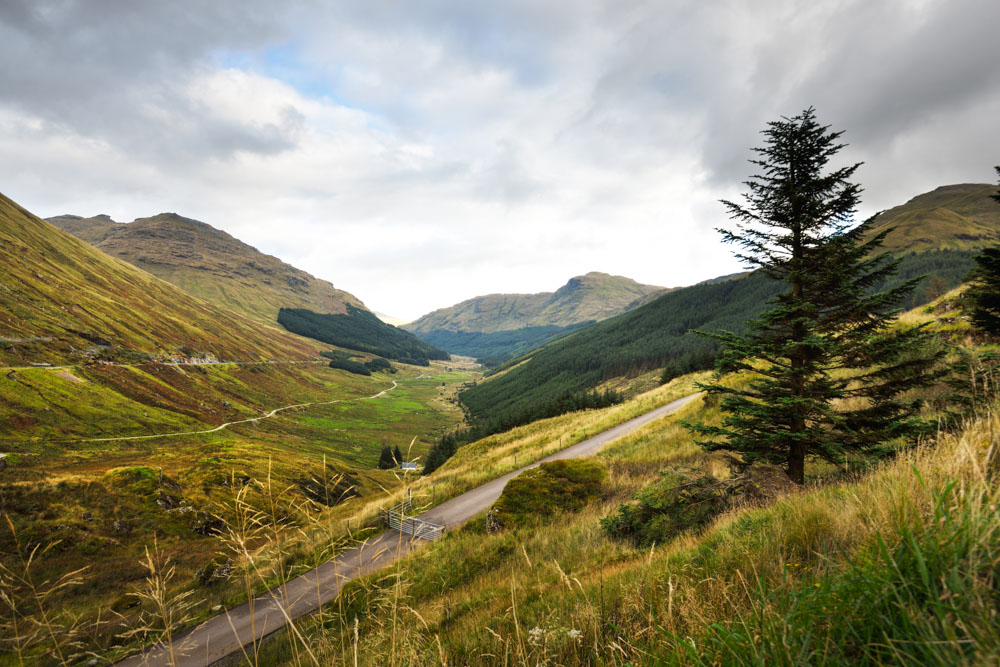
If you’re up for some hill walking or mountaineering, you’ve come to the right place because you can find many of Scotland’s tallest Munros in the national park. One of the most popular mountains to climb is Ben Lomond, which sits at an altitude of 974 meters. It’s a great warmup if you’re planning to tackle Ben Nevis later on in your trip to Scotland.
11. Hike the West Highland Way
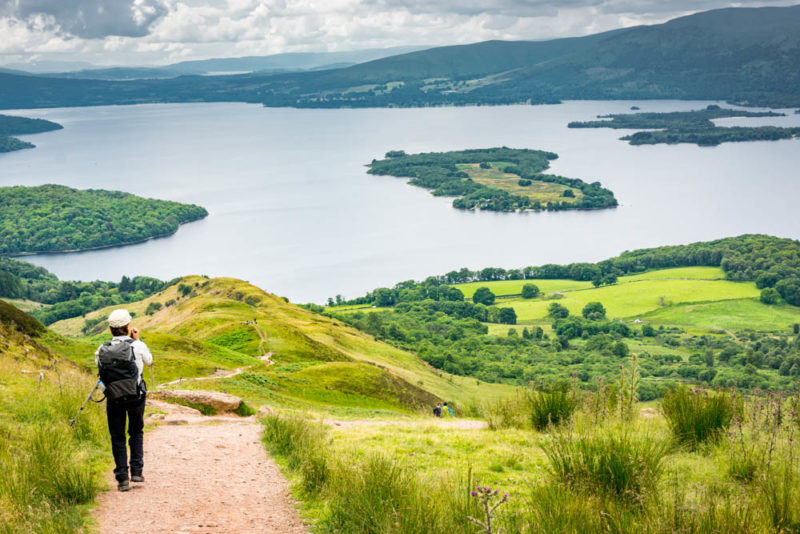
If you’re looking to travel slowly, and experience the great outdoors, one of the best Scotland activities is hiking the West Highland Way. There are many long-distance hiking routes in Scotland, but this is the classic walking trail. It’s the oldest long-distance route in Scotland, and we know that hikers are going to love it!
The West Highland Way is 96 miles long, and it starts just north of Glasgow and ends in Fort William. The official starting point is Milngavie, which is a Glaswegian suburb, but you’ll soon find yourself immersed in nature just a few miles into the trail.
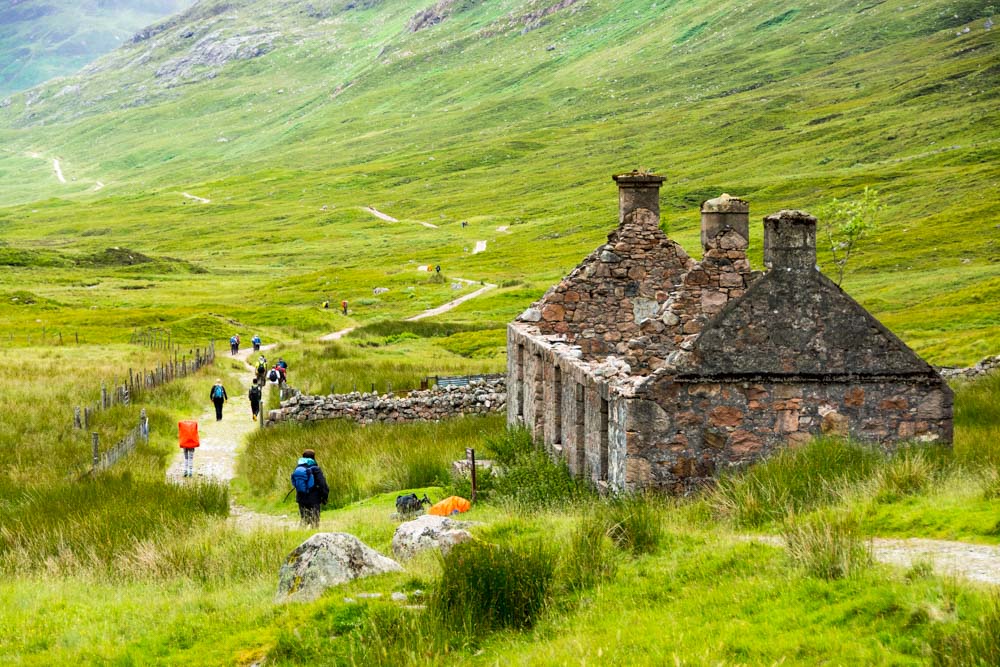
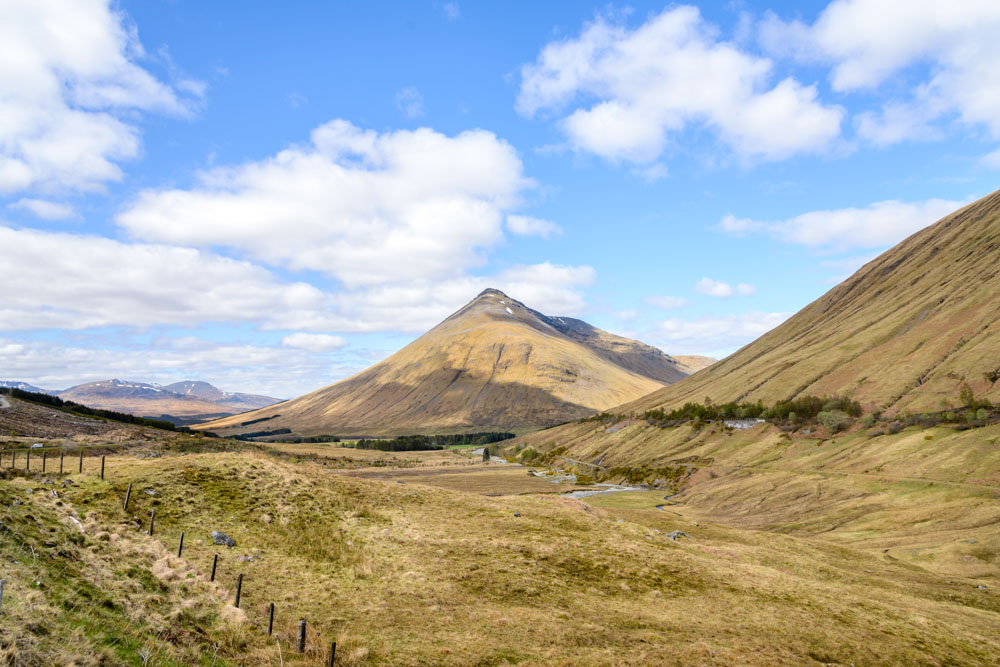
From Milngavie, the West Highland Way takes you north, running parallel to Scotland’s West Coast as you head toward Loch Lomond and the Trossachs National Park. You’ll walk through beautiful glens and valleys, alongside locks and rivers, and through quaint highland towns and villages as you edge ever closer to the endpoint at Fort William.
When you reach Fort William, you can try to summit Ben Nevis. But only if you’ve still got any energy left in you after a multi-day hike through the mountains!
The West Highland Way is well marked along its entire length, but it’s always a good idea to have a map just in case you want to take a detour. There are lots of campsites and bed and breakfasts along the way, and in Scotland, it’s also legal to wild camp when you’re out on the trail.
12. Explore Glencoe’s beauty and history
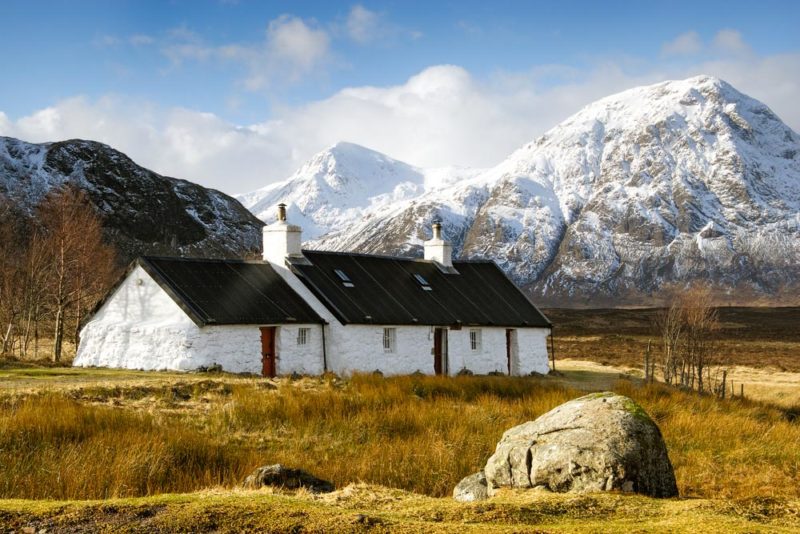
The Scottish Highlands is a place of both heartbreak and beauty, and you can learn all about the region’s tumultuous history and explore its natural beauty with a visit to Glencoe.
You’ll find the village of Glencoe sitting on the banks of Loch Leven and the River Coe, and it’s a charming base for a Highland excursion. The village itself has several hotels and bed and breakfasts catering to tourists, as well as a folk museum and plenty of opportunities for kayaking or canoeing on the loch.
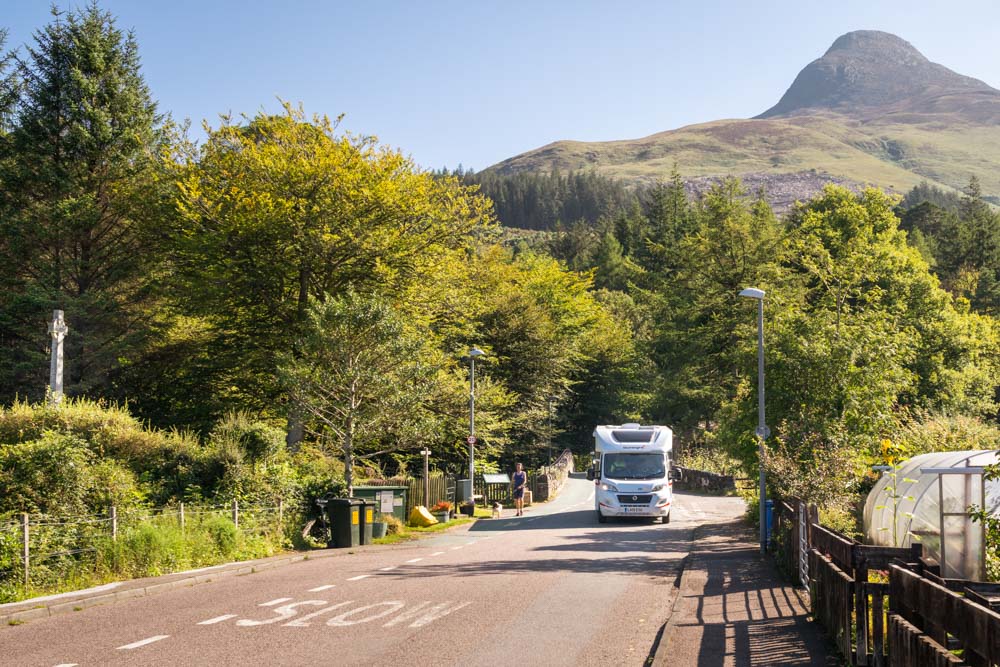

The real reason to visit the village, though, isn’t for the loch, but for the glen. A glen is a type of narrow valley, and the village of Glencoe sits at the end of this valley. Glencoe was made for hiking, and you can spend days walking along the valley, hiking the loch-side trails, and delving deeper into the Highlands.
But there’s a darker side to Glencoe, which you’ll unearth if you hike along the valley to the Glencoe Visitors Centre. Here you’ll learn how Glencoe was the site of an infamous massacre. In 1692, government troops massacred the local highland clans on this very spot after a failed uprising.
This marked the beginning of the end for the Highland clan system, and the massacre was followed by mass clearances that changed the demographic makeup of the region forever. It was a turning point in Scottish history, and you can find out more about the historical and political consequences of the event during your stay in Glencoe.
13. Search Loch Ness for its fabled monster
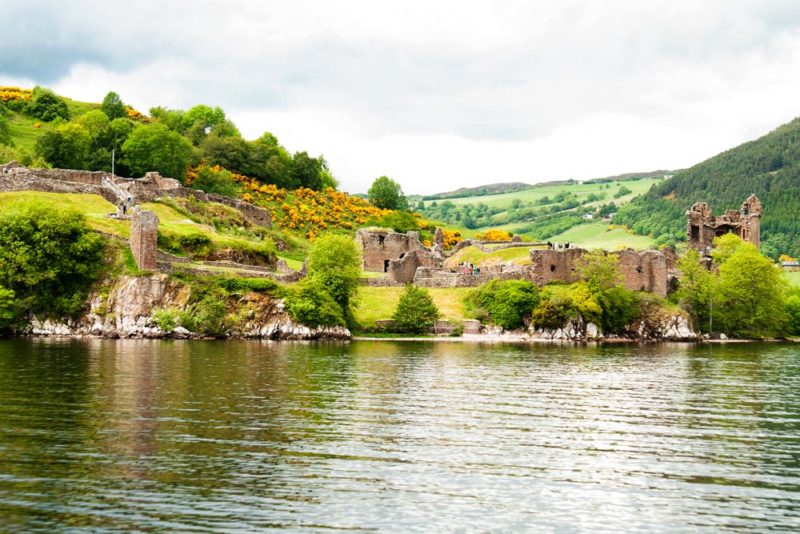
We’ve all heard the legendary rumors of the Loch Ness Monster. This fabled beast is said to inhabit the cold waters of Loch Ness, and tales of its exploits have abounded for centuries. While the rumors are just that (rumors!), don’t let that distract you from embracing this mythical, beautiful, and scenic Scottish destination.
The myth itself is entrenched in the wild nature of Loch Ness. This is one of Scotland’s largest lochs, and it’s located in the far north of the Highlands, just below Inverness. Loch Ness is the second-deepest freshwater loch in Scotland, and the waters are notoriously dark with extremely poor visibility – a condition that only adds fuel to the monster fire.
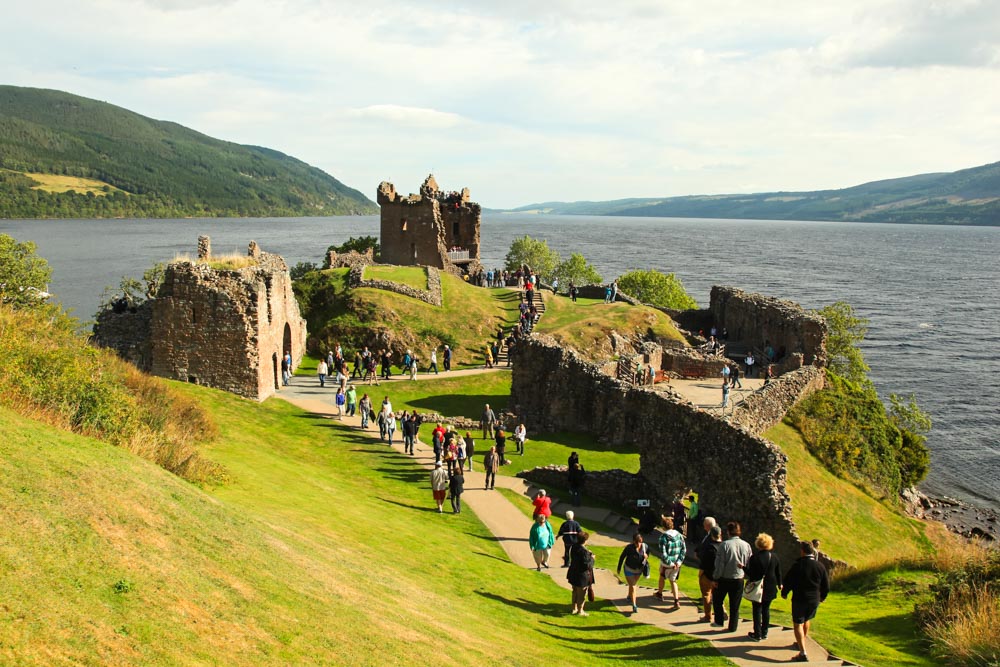
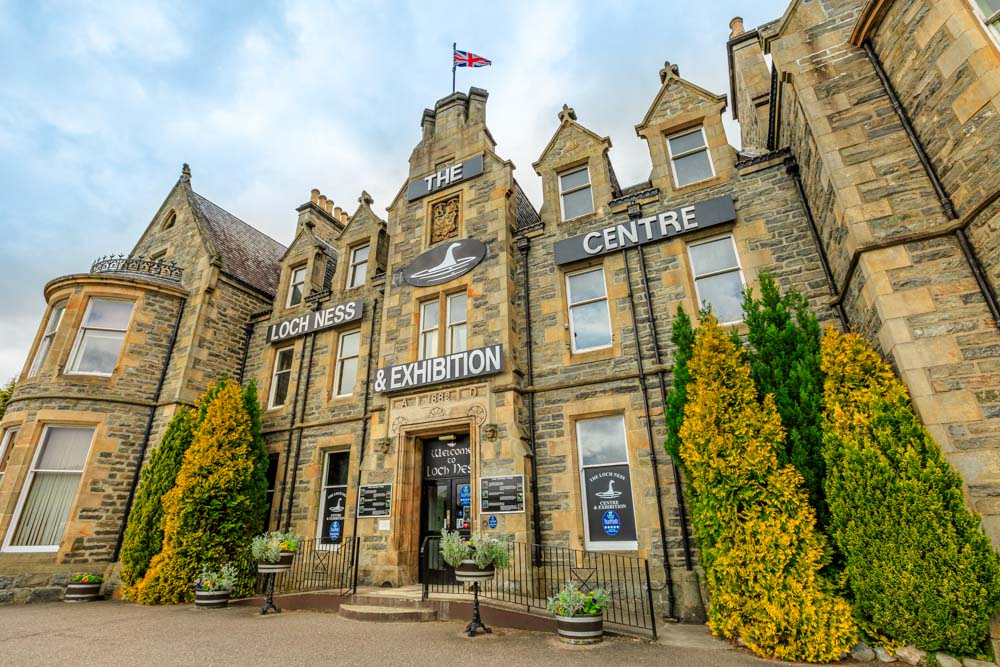
Visit Loch Ness, and you can join a monster searching tour of the loch if you so desire, where tourists are even encouraged to throw in bait to attract the monster to the surface. If that’s not your thing, then don’t worry because you can also enjoy a more peaceful cruise of the loch without having to keep your eyes out for Nessie.
There are several villages spaced around the loch, which is around 22 miles long. You can visit Urquhart Castle, a 13th-century fortress that crumbles dramatically next to the loch, or you can learn more about the area by popping into the Loch Ness Visitors Centre in the village of Drumnadrochit.
Loch Ness is the perfect place to escape to the outdoors, and you’ll find an impressive array of hiking trails, biking trails, and outdoor opportunities such as kayaking, sailing, and boating to enjoy during your stay.
14. Explore the ruins of the Antonine Wall
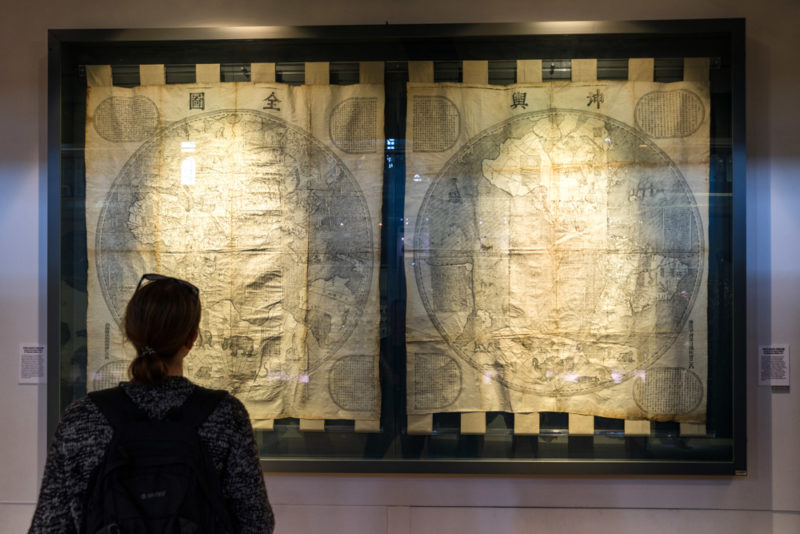
Have you heard of Hadrian’s Wall? Well, the famous Roman wall, built by Emperor Hadrian to mark the border between the Roman Empire and the rest of Britain, is many miles to the south of Scotland, in England.
But have you heard of the Antonine Wall? This is the lesser-known Roman fortification that is found in Scotland, running from east to west across the Scottish Highlands, just north of both Edinburgh and Glasgow. The Antonine Wall was built around 142 AD by another Roman emperor, and it marked the most northerly expansion of the Roman Empire (yes, much further north than Hadrian’s Wall!).
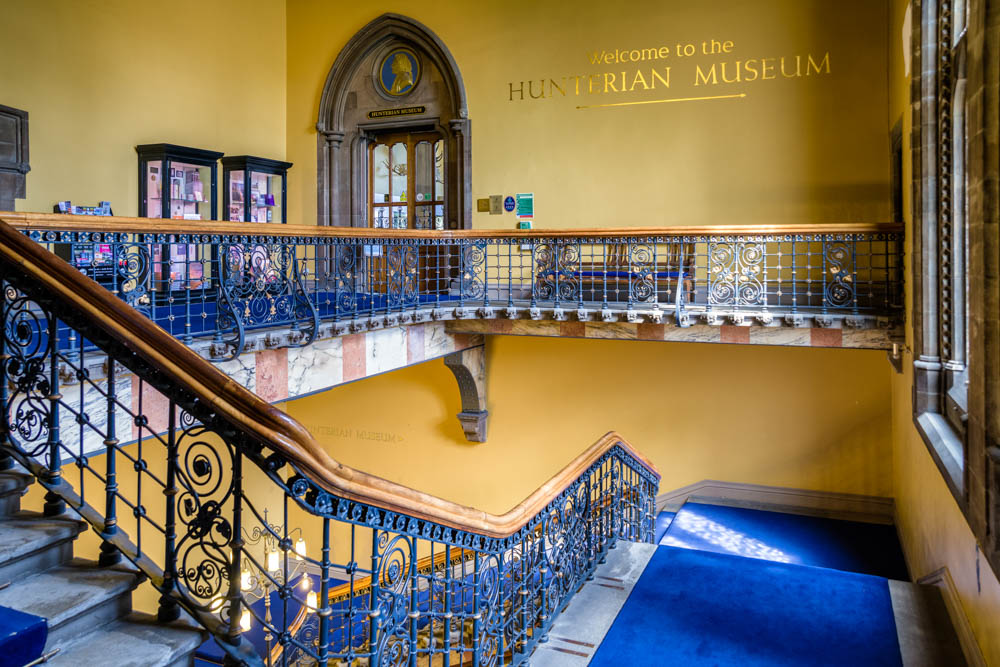
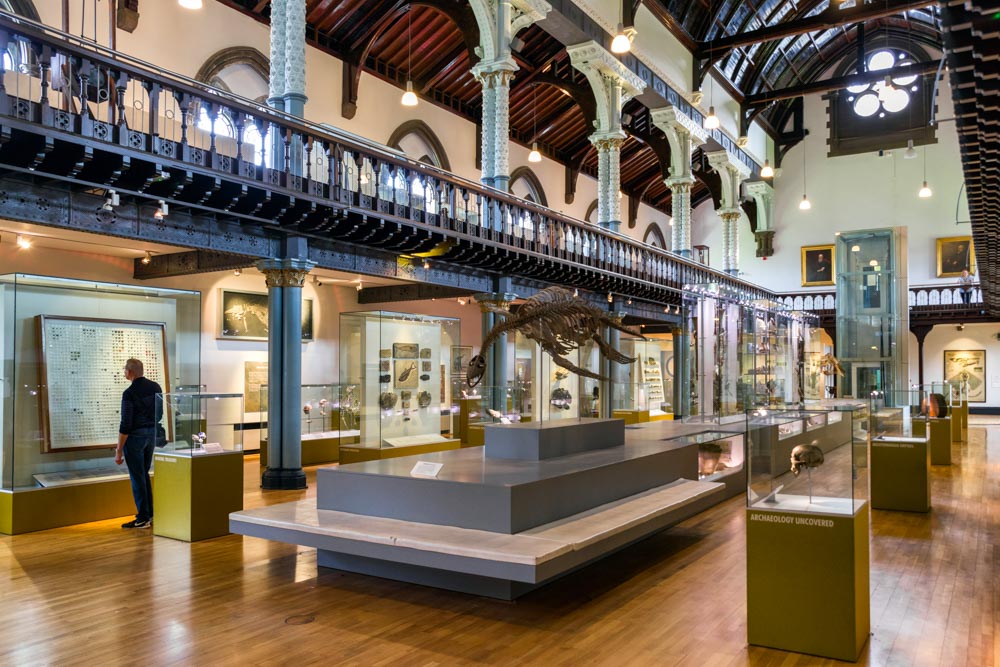
Much of the Antonine Wall was built of wood, though, not stone like Hadrian’s Wall, so very little survived. Modern archaeological excavation has provided us with an insight into the Roman world as it was in Scotland, and you can explore many of the excavated remains on a journey along the Antonine Wall.
Visit Glasgow, and you can start by delving into the artifacts that are held at the Hunterian Museum. The wall begins on the River Clyde, by Old Kilpatrick, then runs east until it hits the River Forth close to Edinburgh. There are impressive remains of an old bathhouse to see at Bearsden. Plus, the remains of the largest fort are found at Castlecary, while the ditches and ramparts at Rough Castle are said to be the best spot along the whole Antonine Wall.
15. Explore Dundee’s maritime history
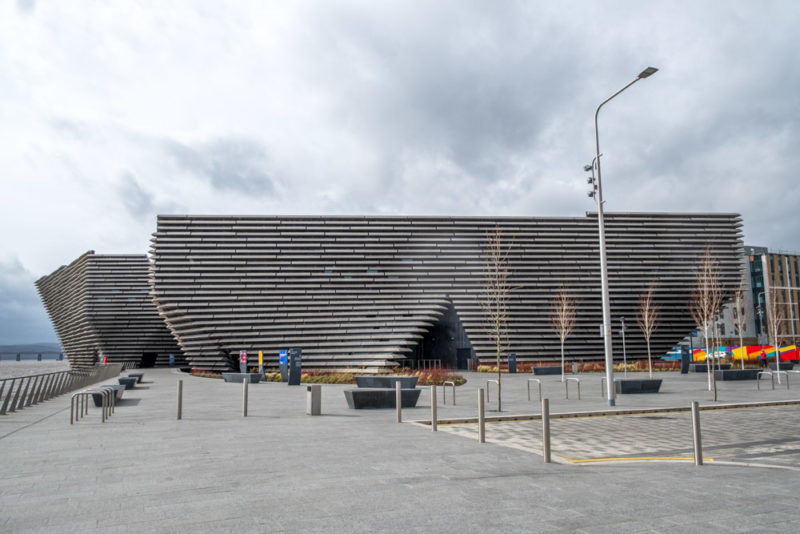
You’ll find Dundee on the banks of the River Tay, just where the river meets the North Sea. While Dundee hasn’t always been a popular place to visit, the city has had a recent facelift and now boasts a beautifully regenerated waterfront alongside some exciting museums.
We recommend arriving by train, so you can cross the magnificent Tay Bridge on your way over the river and into Dundee. You’ll love the city’s quirky architecture, which mixes modern design with Dundee’s traditional, industrial heritage. Dundee is also home to a branch of the V&A (Victoria & Albert Museum), which showcases more of the city’s contribution to both industry and design.
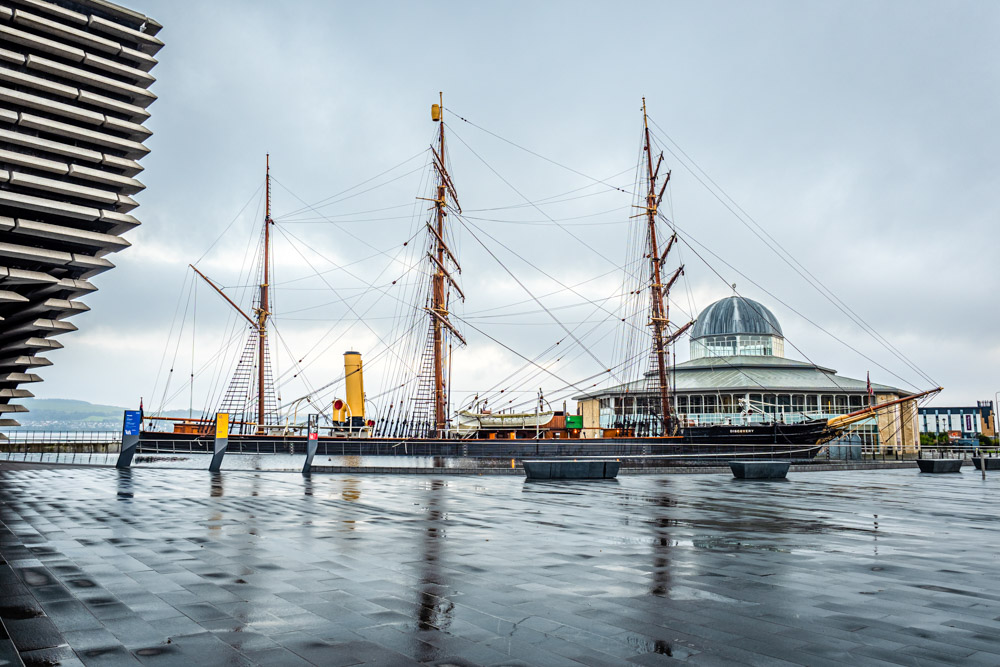
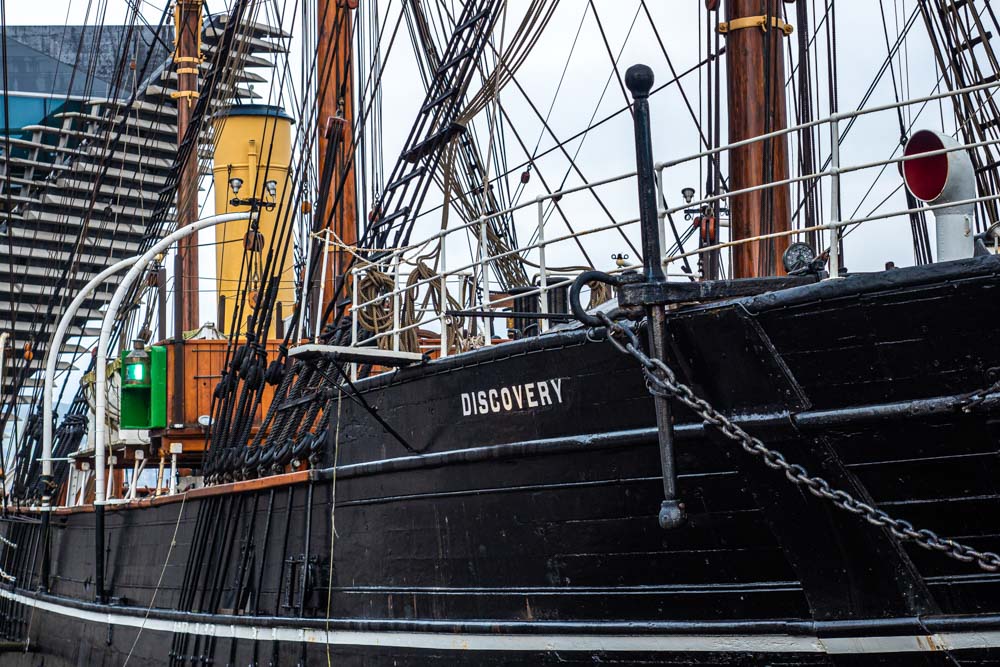
The highlight of any trip to Dundee, though, is a visit to the RRS Discovery. The ship was built in Dundee before making its famous voyage to Antarctica in 1923. It’s now returned home and is berthed along the waterfront. You can learn all about the ship, its crew, and the discoveries they made at the museum.
16. Go skiing in Scotland
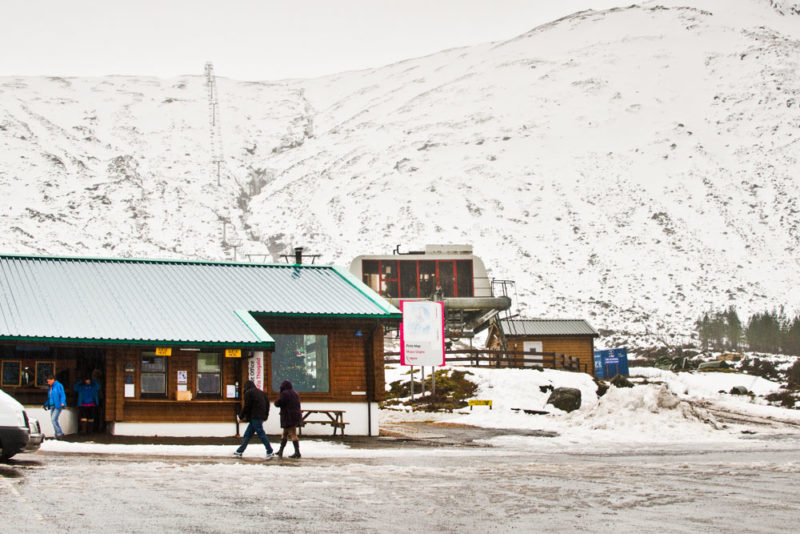
If you’re visiting in the winter, skiing is one of the coolest things to do in Scotland. We’ll be the first to admit, though, that Scotland might not be the first destination that comes to mind when you think of winter sports. That’s just fine because while everyone else heads off to the Alps or the Pyrenees, you can make the most of the Scottish ski slopes in all their wintery glory!
Scotland’s ski season is short but sweet, and you have several key destinations to choose from. One of the best is Cairngorm Mountain. This is one of the highest mountains in Scotland, and it rises to just over 1,000 meters in height.
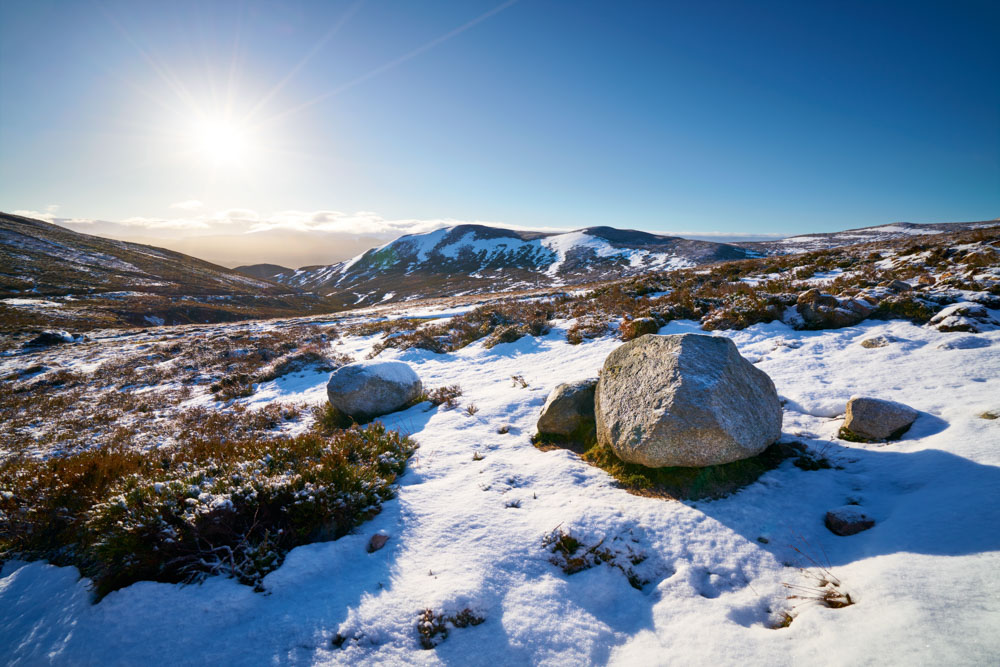
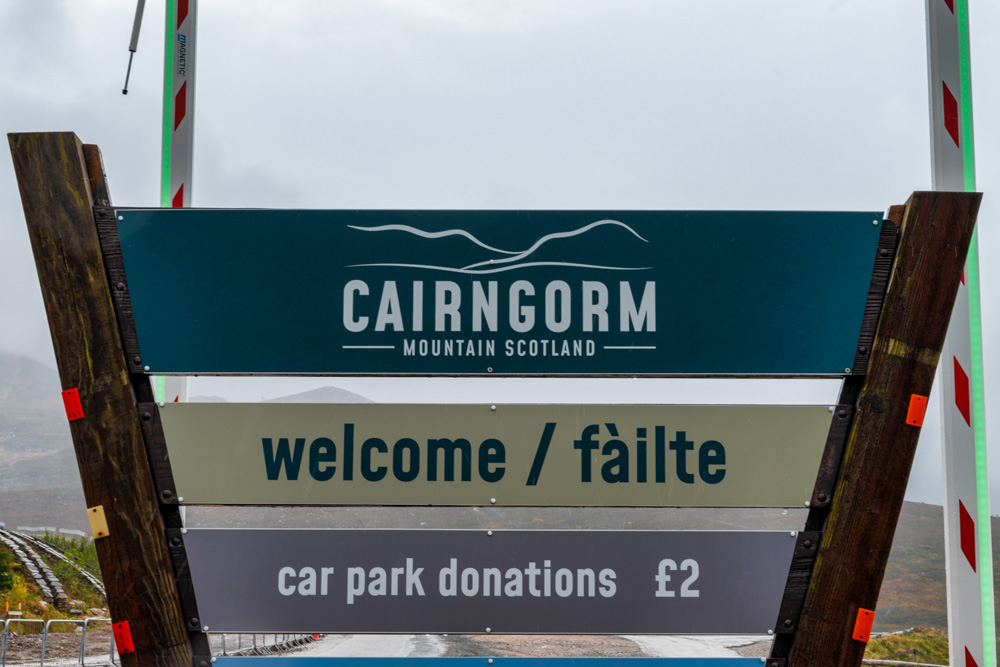
The ski area is within Cairngorms National Park, making this an exceptionally beautiful place to ski. Plus, you’ll love how there’s a mixture of downhill runs and cross-country routes for you to tackle.
Another Scottish favorite is the Glencoe Mountain Resort, which is supremely located in the Glencoe area, right in the shadow of Ben Nevis. This is where you’ll find Scotland’s tallest mountains and Munros, and in winter, they make for some excellent skiing!
17. Sip Scotch in Scotland
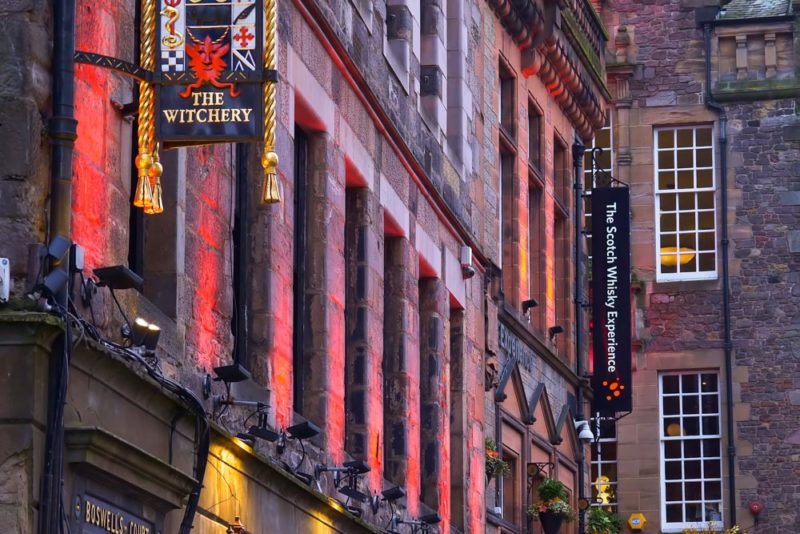
Scotland’s most famous export is its whisky, and rest assured, you’ll have plenty of opportunities to sample a wee dram or two of the hard stuff during your travels!
If you’re in Edinburgh, then you should always start with a visit to the Scotch Whisky Experience, where you’ll not only be taken on a journey through the production process and history of whisky, but you’ll have the chance to see the world’s largest collection of whisky in all its glory (followed by many tastings, of course!).
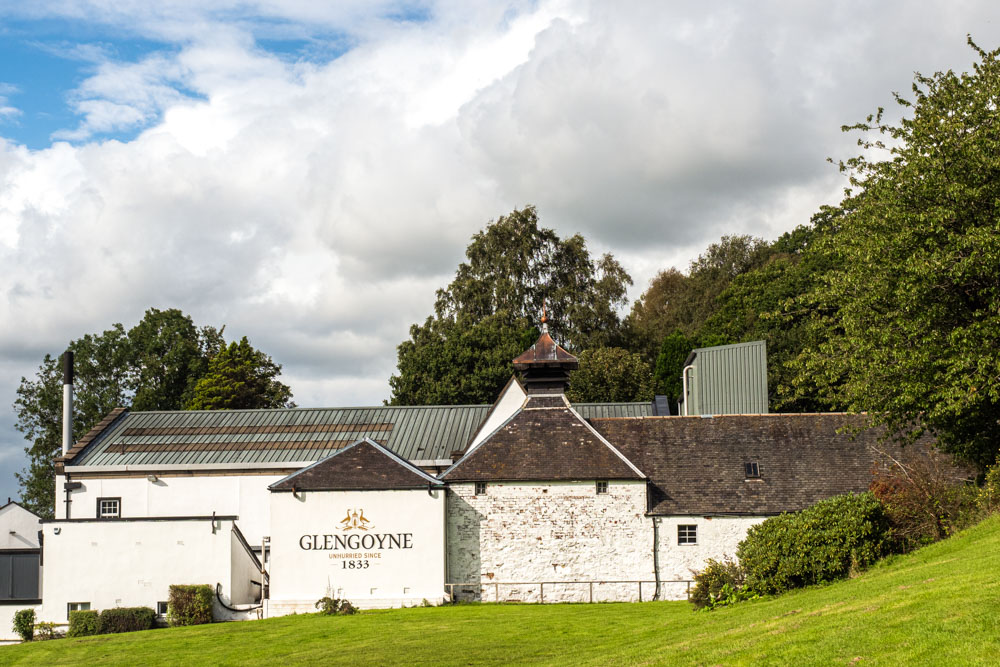

Across Scotland, there are many whisky distilleries offering tours and tastings. Plus, with six distinct whisky-producing regions, alongside over 100 individual producers, you’re going to be hardpressed to visit them all!
A few of the best whisky distilleries in Scotland include Glengoyne, which is just outside of Glasgow, Highland Park Distillery, which is all the way up in the Orkney Islands, and the world-famous Glenlivet, which is found in Cairngorms National Park.
If that’s not enough whisky for one trip, then we recommend heading over to the Hebridean island of Islay, where you’ll find the highest concentration of distillers, including the likes of Laphroaig, Bowmore, and Lagavulin.
18. Uncover folklore on the Isle of Skye
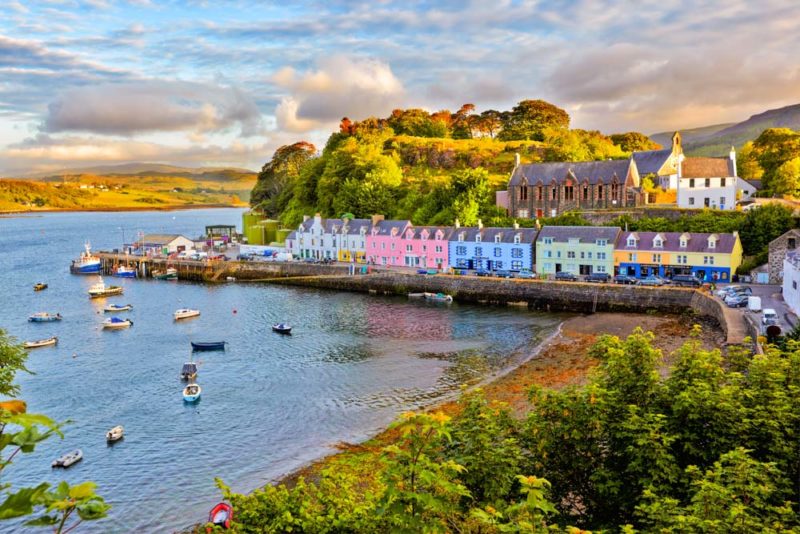
The Isle of Skye is one of the most unique places to visit in Scotland, and you’ll soon fall in love with the island’s breathtaking natural beauty and fairytale-esque folklore.
This is Scotland’s second-largest island, and it’s connected to the island of Eilean Bàn by the dramatic Skye Bridge. Eilean Bàn is then connected to the mainland by another bridge, ensuring that any journey to Skye is going to be an epic one!
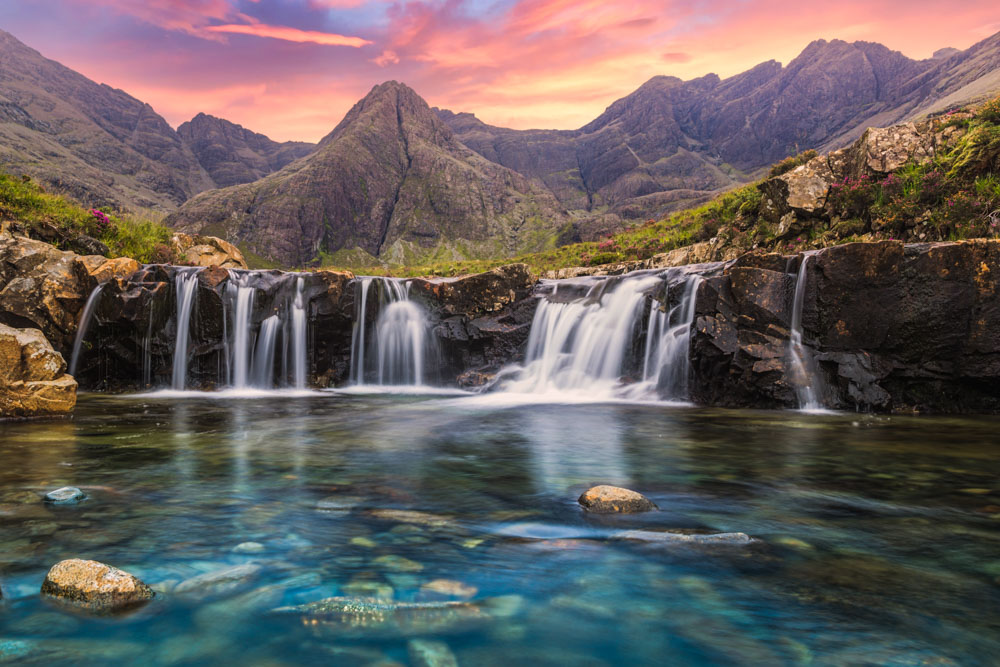
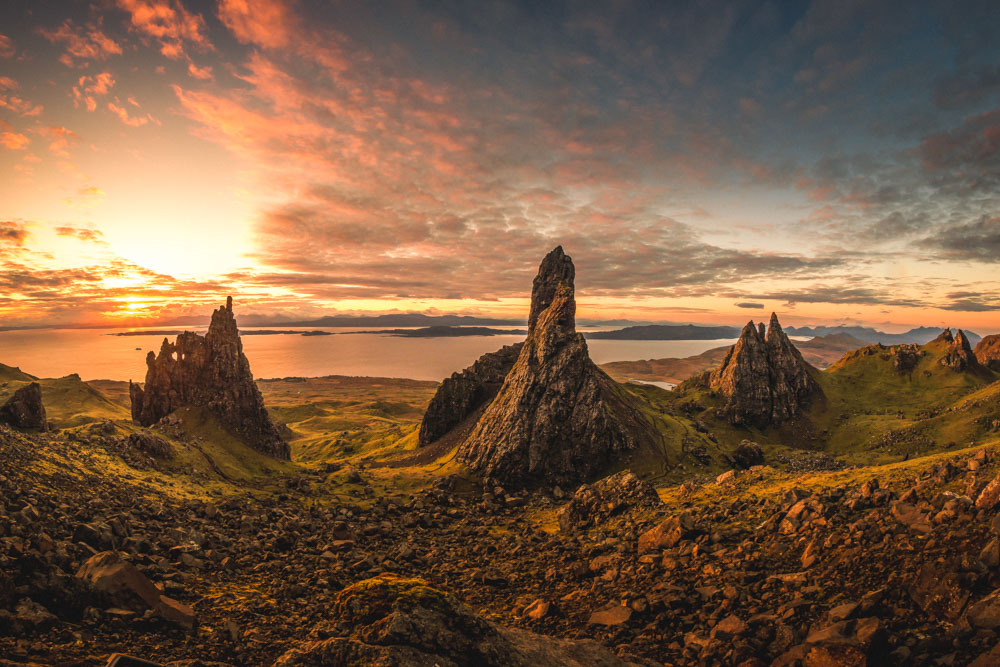
There’s a lot to do on the Isle of Skye, but most of the activities revolve around the island’s great outdoors. First, hike the trail to Fairy Pools, where you can wild swim in a natural pool that’s steeped in local legend and lore.
The hike to the Old Man of Storr, a dramatic, rocky outcrop, is just as enthralling, while the tough Quiraing Loop will take your breath away both physically and imaginatively. There are stone circles, medieval castles, and whisky distilleries to uncover on land, there’s dramatic coastal scenery to explore by boat, and there’s wildlife to be encountered around every turn on the Isle of Skye!
19. Marvel at the white sand beaches on the Isle of Lewis and Harris
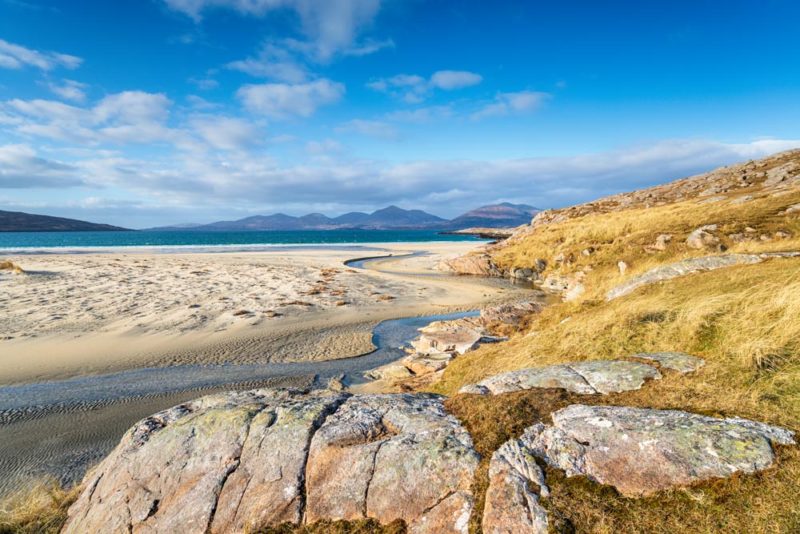
Scotland isn’t the first country that comes to mind when you think of white sand beaches, but visit the Isle of Lewis and Harris, and your perception of Scotland as a beach holiday destination will change forever.
The Isle of Lewis and Harris is located in the Outer Hebrides, off the west coast of mainland Scotland. The island is home to a few small communities, plenty of ruins and nature, and arguably the best beaches in Scotland.
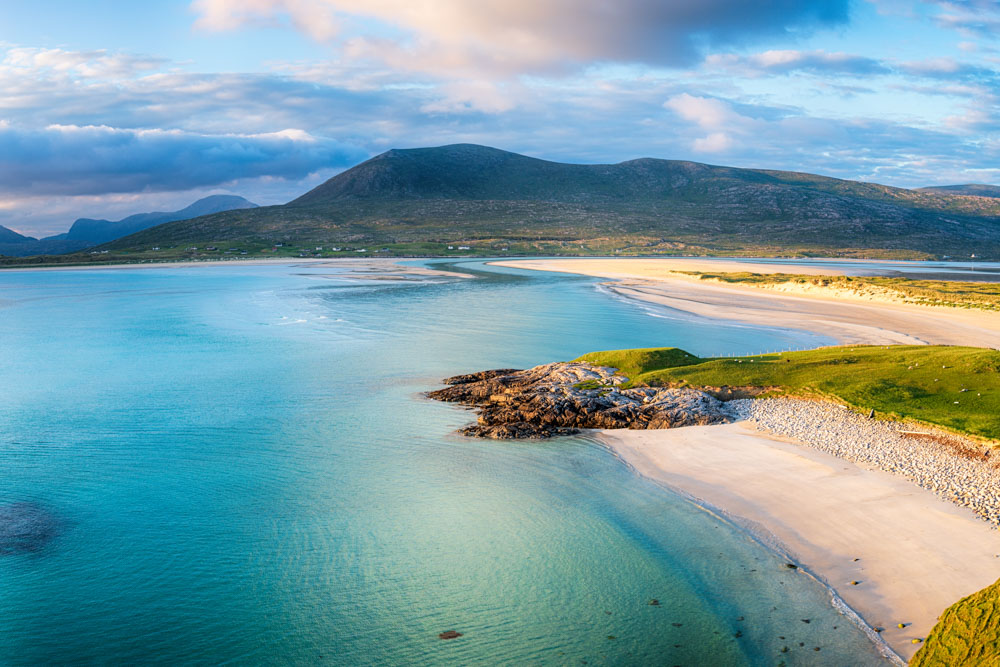
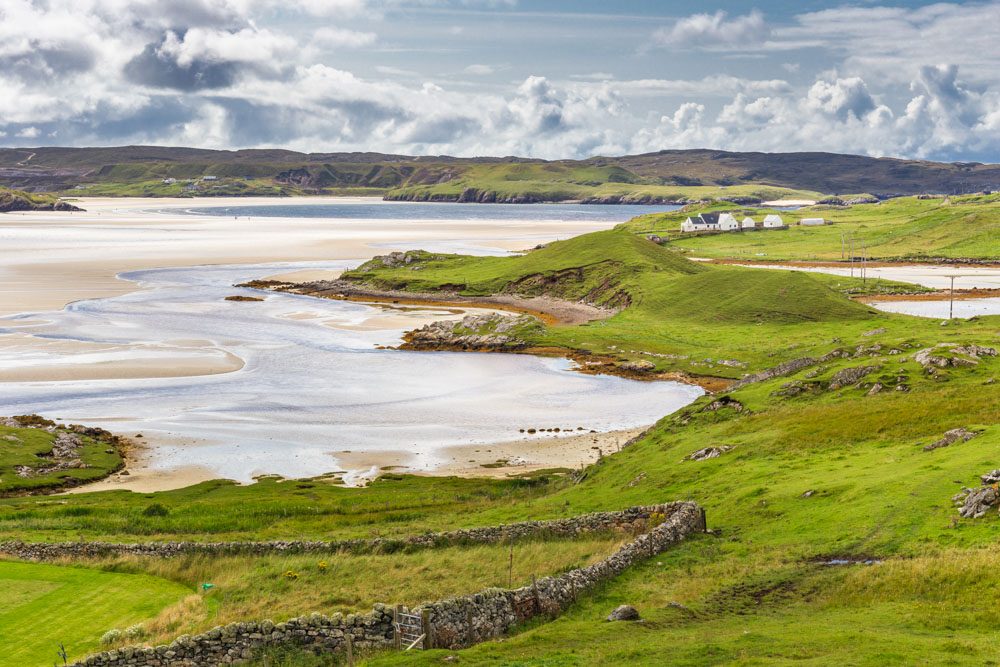
The most well-known beach on the island is Luskentyre, which in the summer, with its turquoise water and bright white sand, would look more at home in Australia than it does in Scotland. Other beautiful beaches include Borve, Horgabost, and Seilebost, all of which offer white sands and beautiful natural surroundings.
20. Go birdwatching in St Kilda
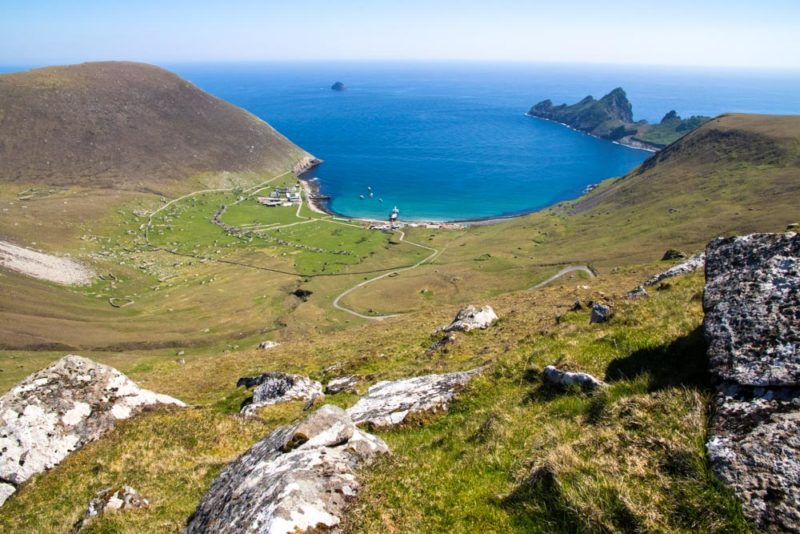
Many destinations in Scotland can be considered “remote,” but few places can match St Kilda for its distance and lack of population. St Kilda is a small archipelago that’s located in the north sea, and no one has lived here since the last community left in the 1930s.
For nature lovers, St Kilda’s isolation and lack of people is perfect because it has become a birdwatching paradise. St Kilda is the UK’s only dual UNESCO World Heritage Site, and it’s home to at least 1 million seabirds, including an enormous population of puffins.
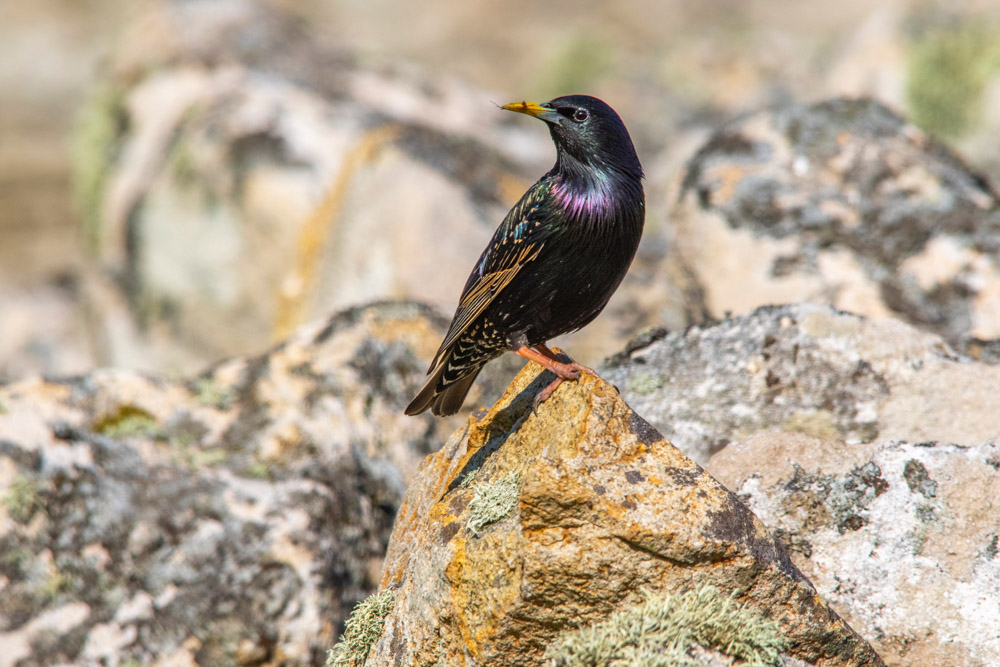
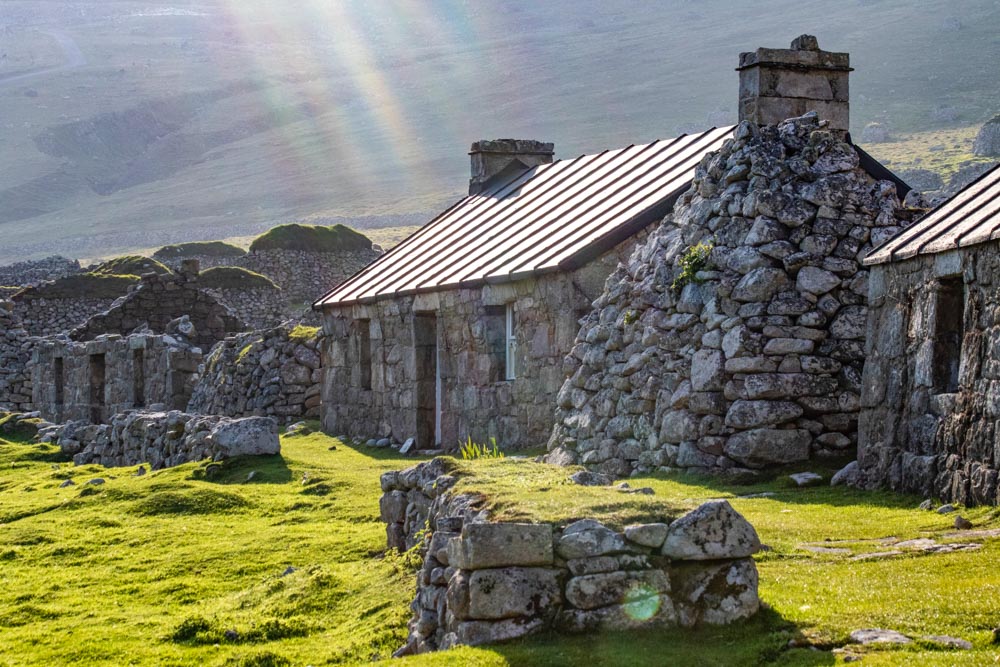
The St Kilda archipelago contains the most outermost of the islands in the Outer Hebrides, and this is one of the most distant places in the United Kingdom. It’s managed by the National Trust for Scotland, and in the summer, you can visit on a boat tour from the Isle of Lewis Harris or from the Isle of Skye.
It’s a 2.5-hour journey to St Kilda from the Isle of Lewis and Harris, and when you arrive, you’ll be greeted by dramatic, rugged, and rocky scenery. You can hike across the main island of St Kilda, cruise around the smaller islands and islets, and visit the abandoned remains of the last human settlements. And, of course, you’ll see thousands and thousands of birds!
21. Unearth Scotland’s Norse history in the Orkney Islands
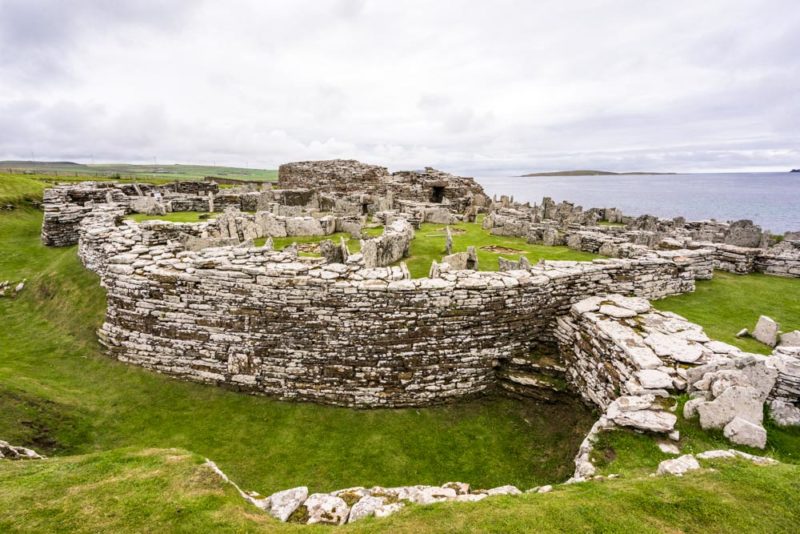
You’ll find the Orkney Islands sitting just off the most northerly tip of Scotland. This might be one of the most distant places in the United Kingdom, but the Orkney Islands are also one of the most historic.
On these rugged and windswept isles on the northern edge of Britain, you can unearth an ancient history stretching back 5,000 years. The Orkney Islands are home to one of the densest concentrations of archaeological sites in Europe, including Skara Brae, a Neolithic settlement that is thought to date back to at least 3000 BC.
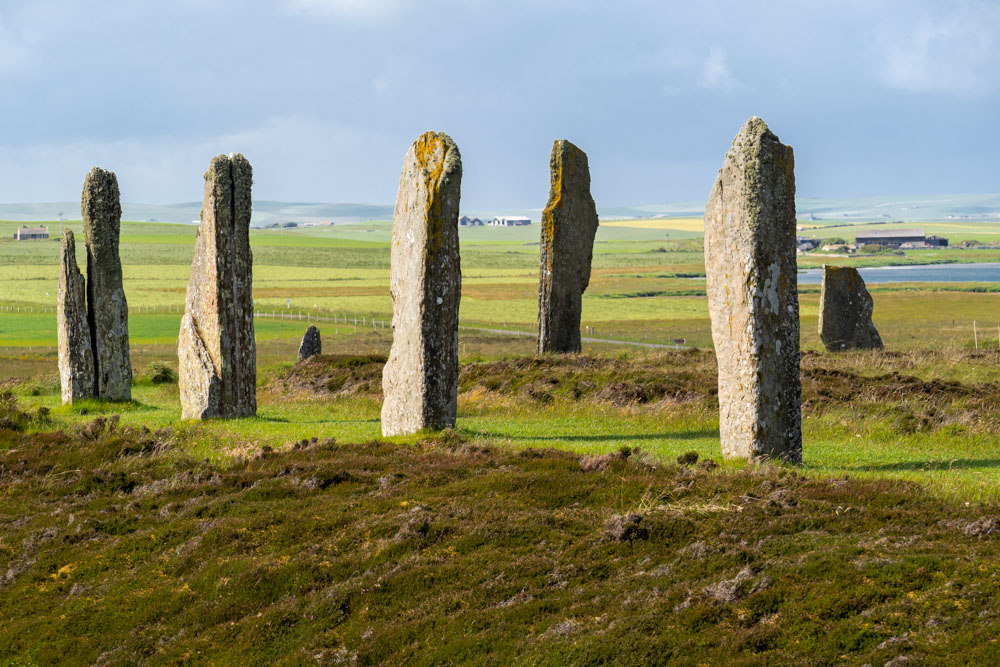
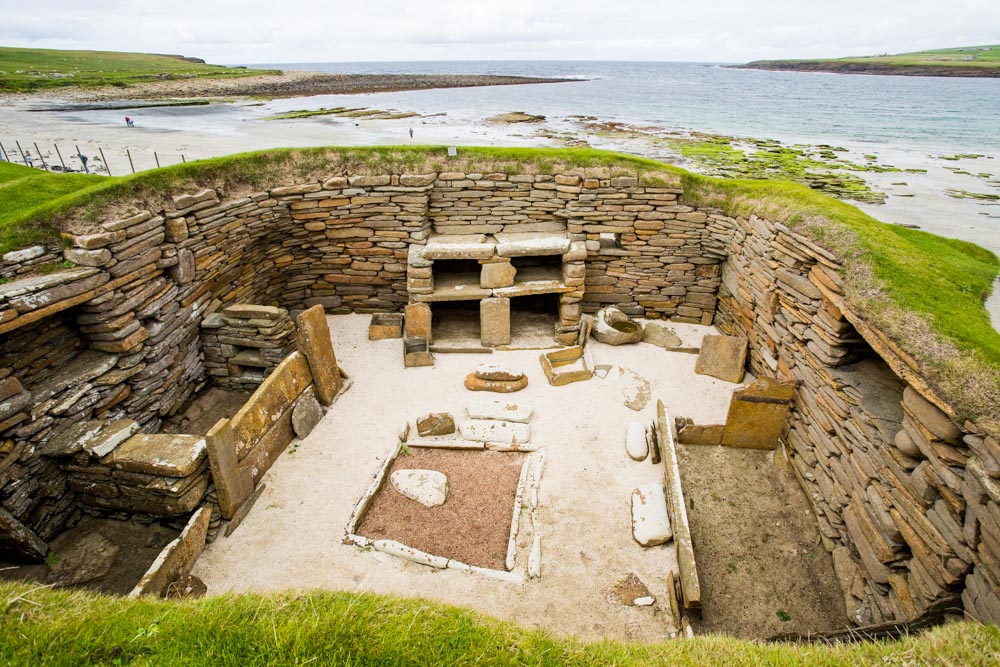
There are Neolithic tombs to visit, ancient stone circles dot the landscapes, and Viking ruins from a more modern era are begging to be explored. But the Orkney Islands aren’t just for history buffs because the archipelago is also home to an impressive array of birdlife and marine life, making this a fantastic place for nature lovers, too!
22. Go wildlife spotting in the Shetland Islands
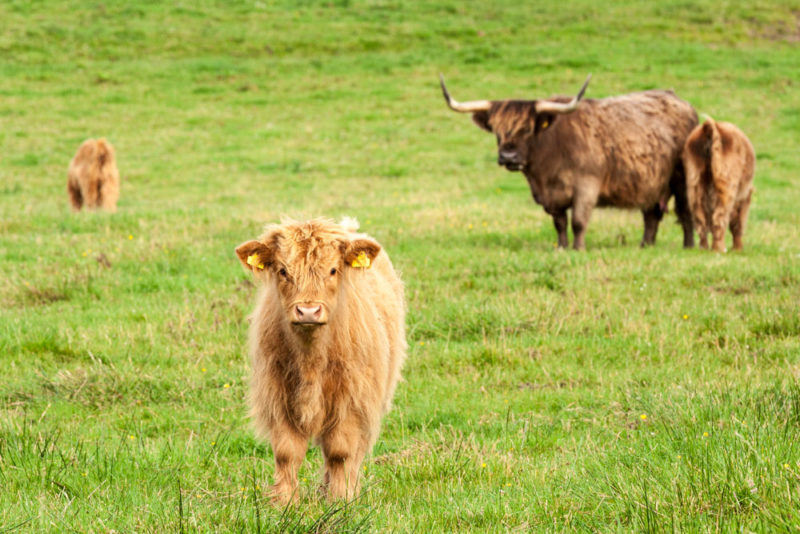
The Shetland Islands are the most northerly point in the United Kingdom, and you’ll need to take a ferry or a flight from the mainland to reach this remote archipelago. The Shetland Islands are just about as rugged and windswept as it gets in Scotland, but you might just find yourself falling in love with the unique culture, scenery, and wildlife that’s found here.
The Shetland Islands have a distinct Norse history that’s very different from the rest of Scotland. There’s still a local dialect descended from Old Norse, there are Viking-inspired festivals throughout the year, and there are Norse archaeological sites all over the islands.
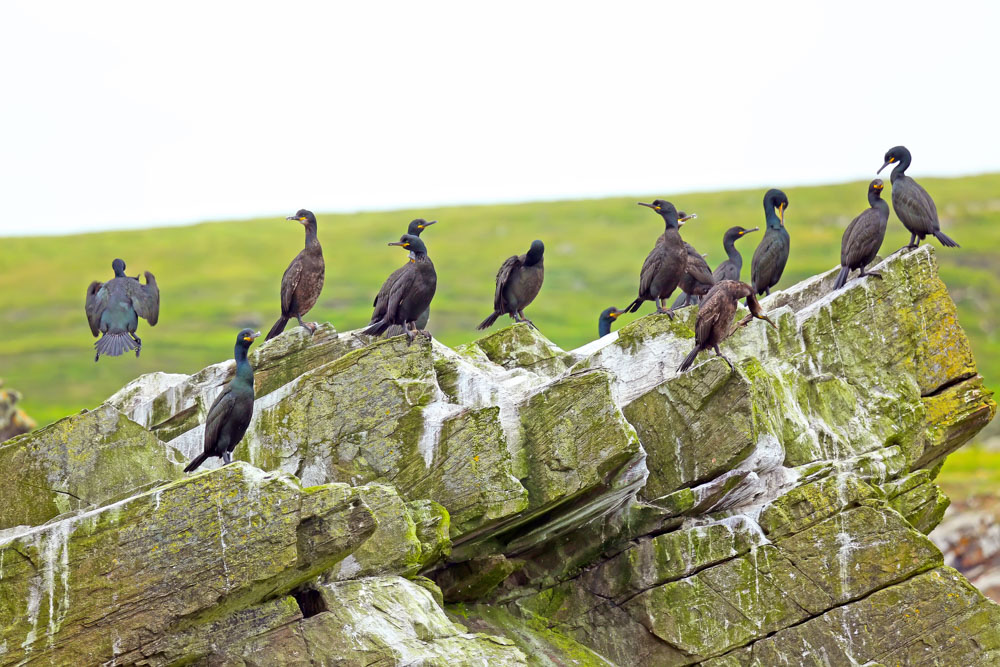
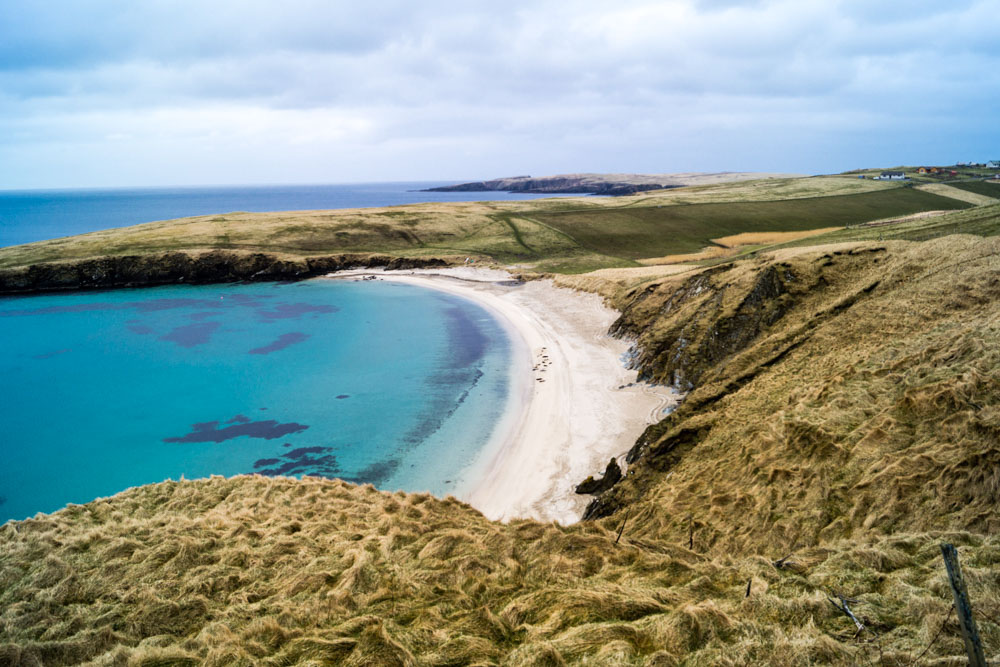
The distance of the Shetlands from the mainland has cultivated this unique culture, and distance has also allowed the islands to become a haven for wildlife. The Shetland Islands teem with birdlife, while across the landscapes, you’ll spot Shetland ponies, Shetland sheep, and Shetland sheepdogs.
There are dolphins, seals, otters, and porpoises to be spotted along the coast, and if you’re lucky, you might even see a few puffins!
23. Sample all the local Scottish delicacies
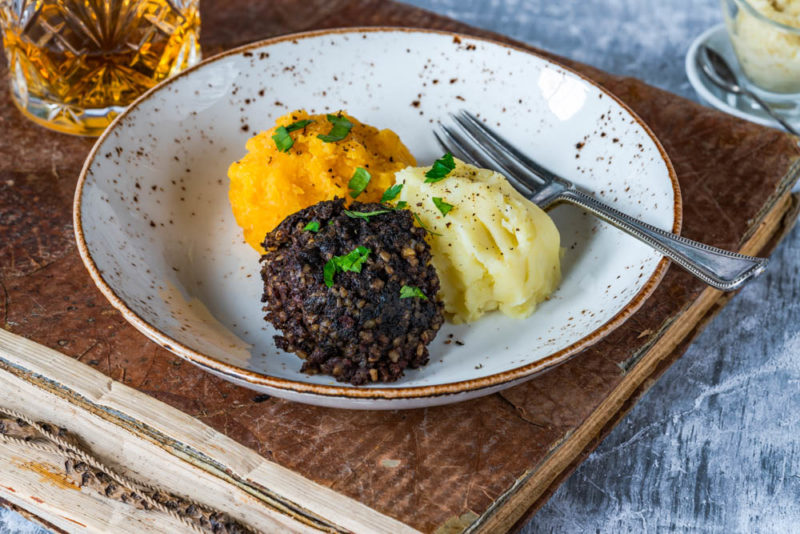
Scotland is a unique destination for foodies, and you’ll come to love (or hate) some of the country’s quirkier delicacies during your trip.
There are several Scottish classics you have to try during your vacation, including the infamous haggis and neeps. Haggis is prepared from all the “worst” parts of a sheep, including the stomach, and it’s served up with a side of turnips (neeps) and potatoes (tatties).
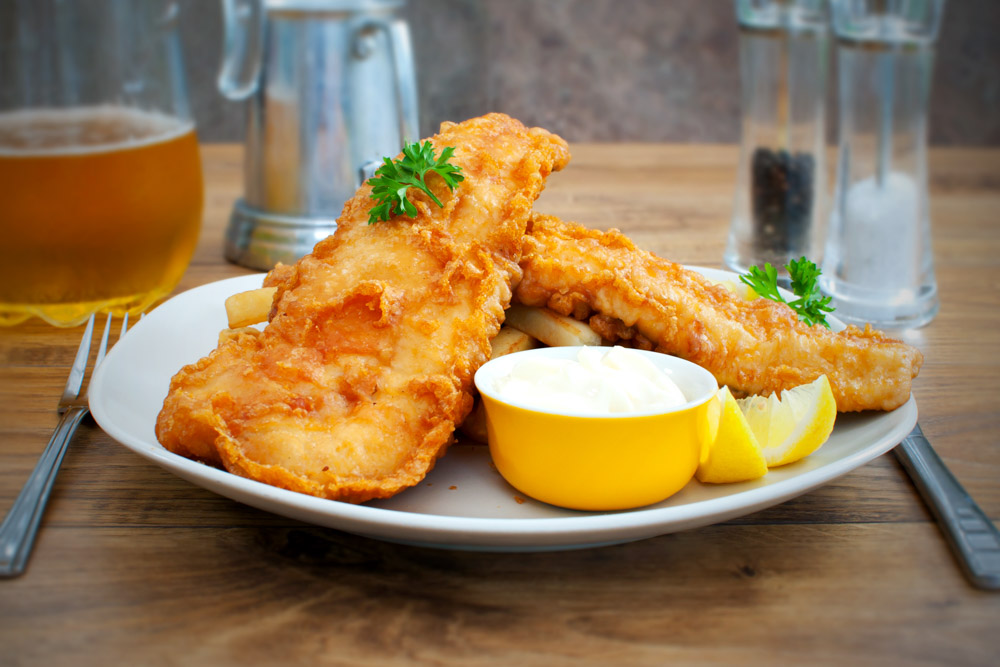

Then you’ve got your deep-fried Mars bars and your Irn-Bru (a Scottish carbonated soft drink), as well as the fish and chips and kebabs. But there’s also much more to Scottish cuisine than deep-fried fast food and haggis. Delve a little deeper, and you’ll find that there’s a vibrant, multicultural dining scene in the cities and in the Highlands.
In Glasgow, try the city’s best tikka masala dishes at the Indian restaurants. In Edinburgh, you can find Michelin-starred restaurants serving up fusion food, while at Highland hotels, sustainably sourced Scottish salmon, local game, and homegrown vegetables are always on the menu.
24. Spend the night in a Scottish castle
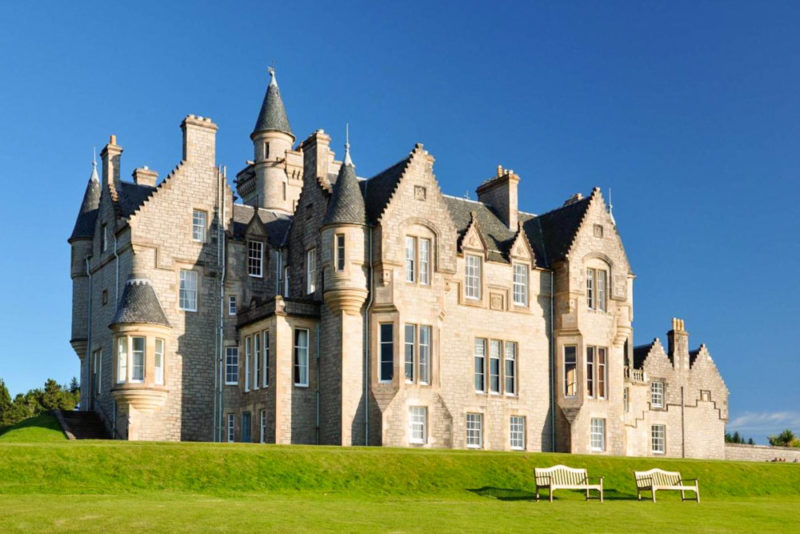
One of the best things to do in Scotland is to spend the night in an authentic Scottish castle. Scotland’s tumultuous history ensures that the landscapes are dotted with historic castles, many of them dating back to the medieval era.
Many of them have also been repurposed into beautiful boutique hotels. These incredible properties are guaranteed to capture the imagination through their character and history.
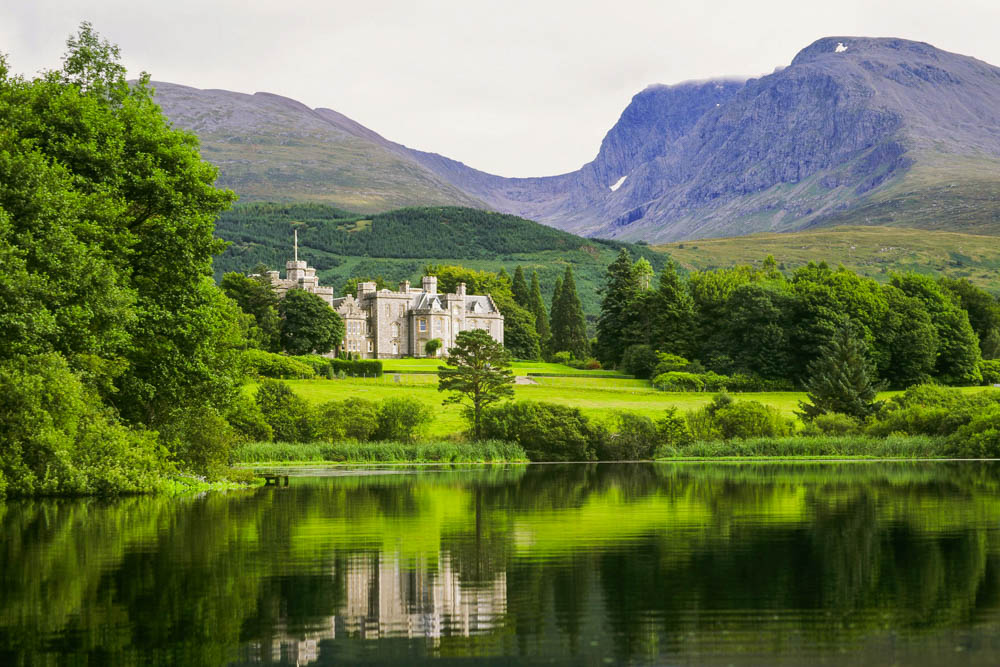
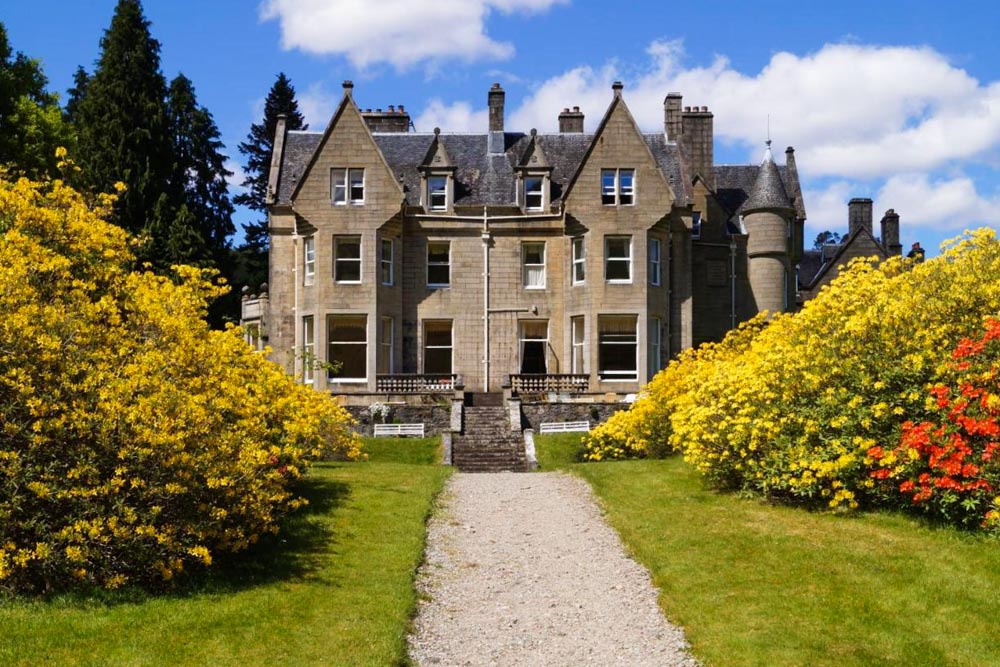
There are castle hotels to be found in the remote Western Isles, including Glengorm Castle on the Isle of Mull. There are wonderful castles, like Inverlochy Castle or Glengarry Castle, which overlook the waters of Scotland’s lochs, and there are many more castles dotted through the Highlands.
Uncover tales of warring kings and queens, and enjoy a luxurious stay and excellent dining in Scotland’s best castle hotels!
25. Celebrate Hogmanay in Scotland
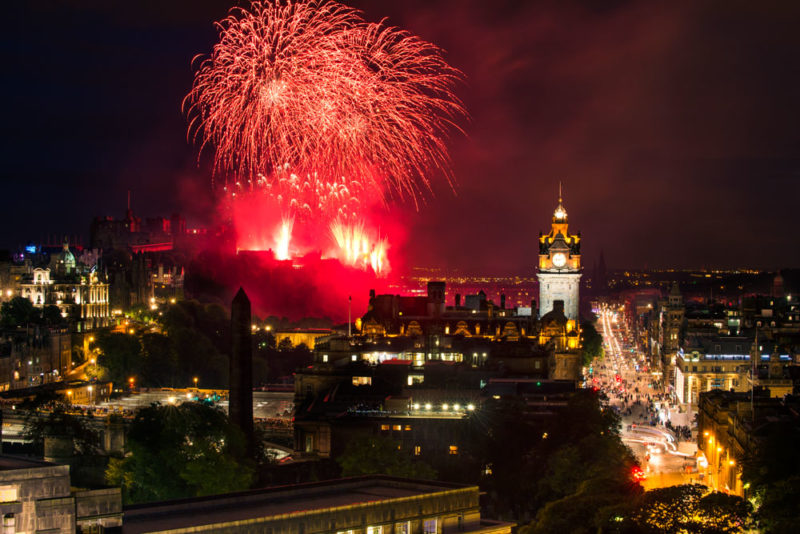
Hogmanay is Scotland’s New Year celebration (Hogmanay means New Year in the Scots language), and it’s one of the best times to be in the country. The celebration typically takes place on December 31. However, the more raucous Scots often extend this well into the New Year, with celebrations sometimes continuing until January 2, if not beyond!
Be prepared not just for beer and whisky drinking and renditions of Auld Lang Syne to welcome in the New Year, but for a cultural feast of Scottish history and heritage, too. Hogmanay celebrations are varied across the country, with each region having its own distinct customs, but many of those customs are drawn from old Gaelic and Norse traditions that have been passed down through the generations.
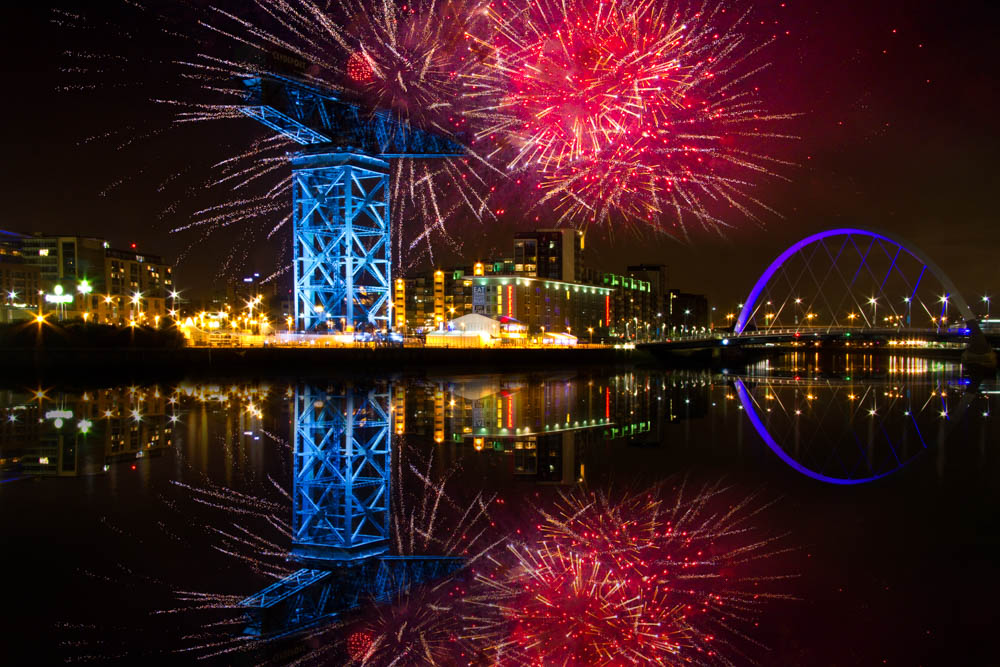
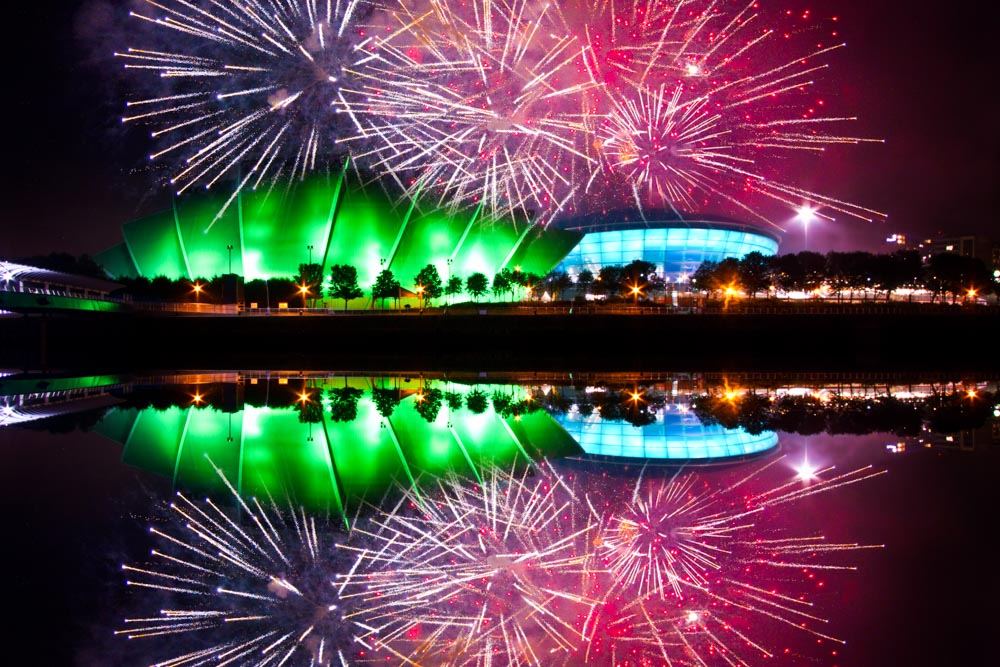
Across Scotland, the tradition of “first-footing,” or being the first person to enter a friend or family member’s household in the New Year, is one of the most popular events. In Stonehaven, large fireballs are swung in a procession through the streets, while in certain places, replica Viking longships are burned in a huge pyre.
In Glasgow and Edinburgh, the celebrations have become multicultural, without losing sight of their traditions, while you’ll also find that in the cities, there are late-night parties and events taking place in pubs and venues that carry on well into the New Year!
There you have it! The 25 best things to do in Scotland. What’s your favorite thing to do in Scotland?
SHARE THIS ON PINTEREST
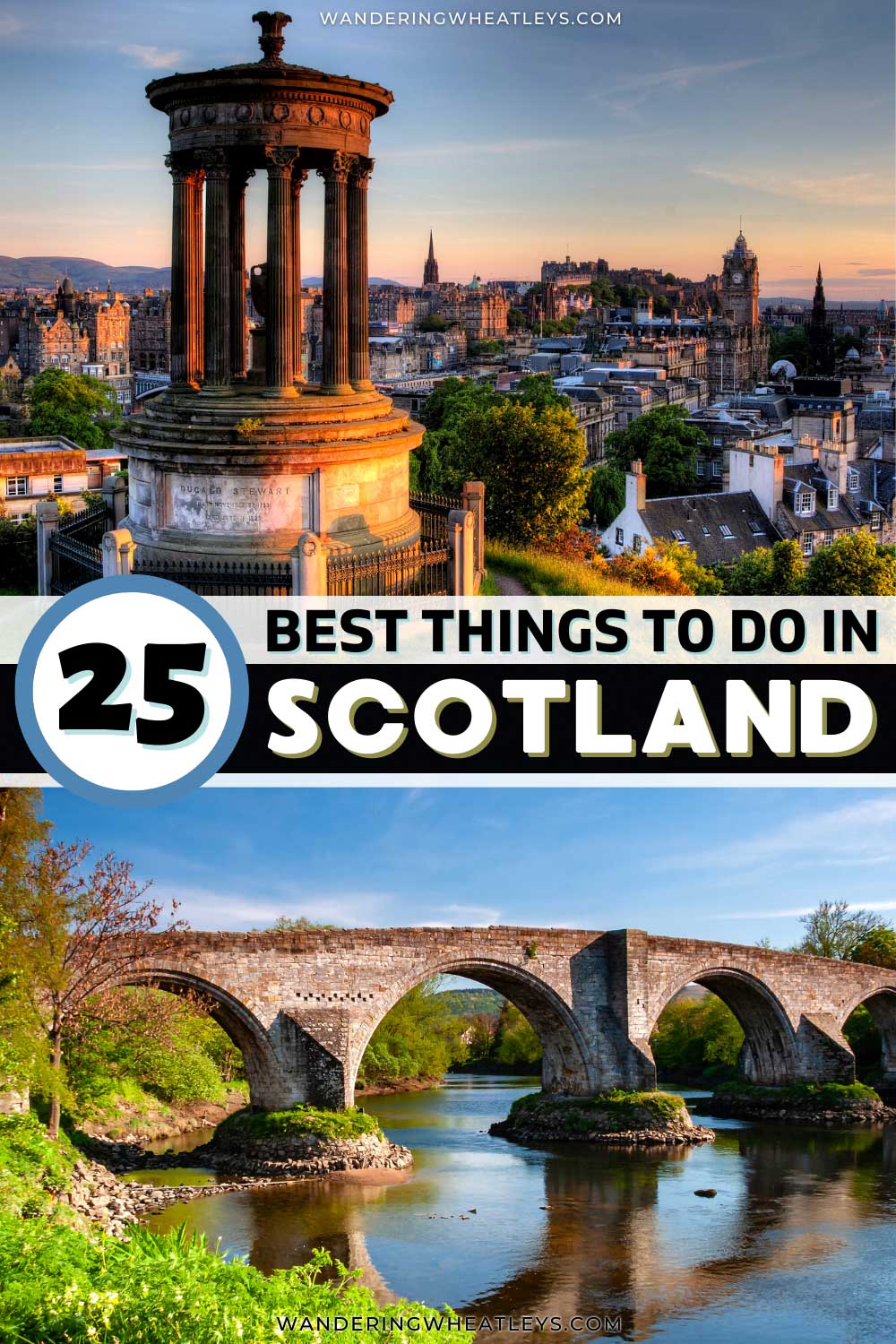
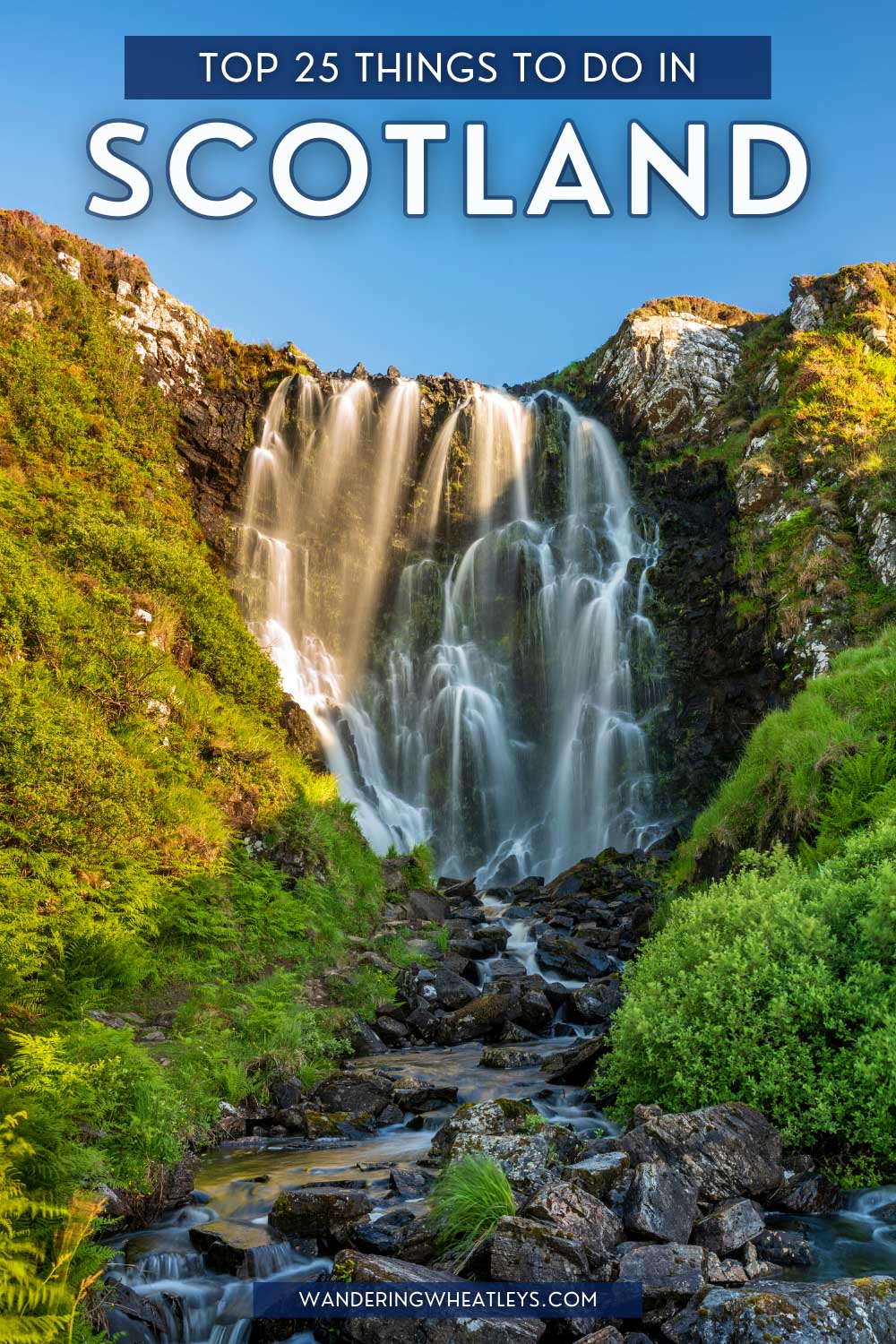
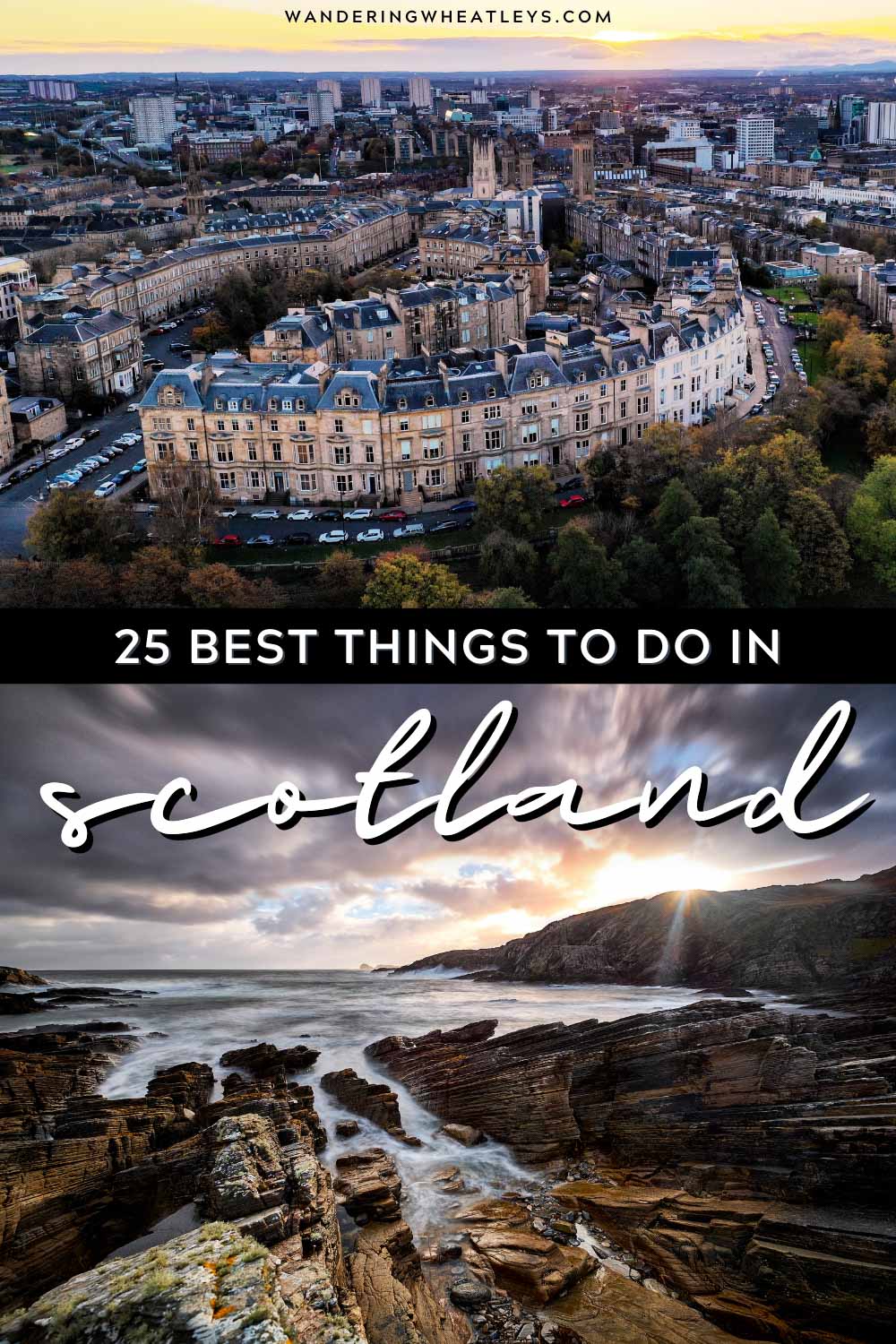
Frequently Asked Questions
One of the coolest things to do in Scotland is the North Coast 500, or NC500, a spectacular self-driving route that takes you through Northern Scotland’s most beautiful scenery. The NC500 is 516 miles long (hence the name!), and it was designed to link up the best outdoor, cultural, and historical attractions to the north of Inverness.
Have you ever seen the Harry Potter movies? If the answer is “yes,” you’ll have seen the Hogwarts Express as it steams its way through dramatic mountain scenery. That’s not CGI because it was the historic Jacobite Steam Train that stood in for the Hogwarts Express in many of the external shots. The Jacobite runs on the West Highland Line, a 42-mile railway track that connects Fort William to Mallaig. The journey takes around 2 hours to complete.
If you’re exploring Edinburgh, then the hike to the top of Arthur’s Seat is one of the most unique things to do in Scotland. Arthur’s Seat is the best viewpoint in the city, but it’s more than this because Arthur’s Seat is also an ancient, extinct volcano. This unusual natural feature is a symbol of the Scottish capital. It rises high above the Parliament building and Holyrood Palace, standing guard over Scotland’s institutions and people.
If you only have time to visit one castle when you’re in Scotland, then make it Stirling Castle. This is one of the country’s most important strongholds, and you’ll be awed by the sight of tall towers and medieval walls standing tall on top of the craggy hilltop. Stirling Castle is located next to a vital crossing of the River Forth, and it’s thought to date back to at least the 12th century, if not earlier.
The Isle of Skye is one of the most unique places to visit in Scotland, and you’ll soon fall in love with the island’s breathtaking natural beauty and fairytale-esque folklore. This is Scotland’s second-largest island, and it’s connected to the island of Eilean Bàn by the dramatic Skye Bridge. Eilean Bàn is then connected to the mainland by another bridge, ensuring that any journey to Skye is going to be an epic one!
Scotland is a unique destination for foodies, and you’ll come to love (or hate) some of the country’s quirkier delicacies during your trip. There are several Scottish classics you have to try during your vacation, including the infamous haggis and neeps. Haggis is prepared from all the “worst” parts of a sheep, including the stomach, and it’s served up with a side of turnips (neeps) and potatoes (tatties). Then you’ve got your deep-fried Mars bars and your Irn-Bru (a Scottish carbonated soft drink), as well as the fish and chips and kebabs.

